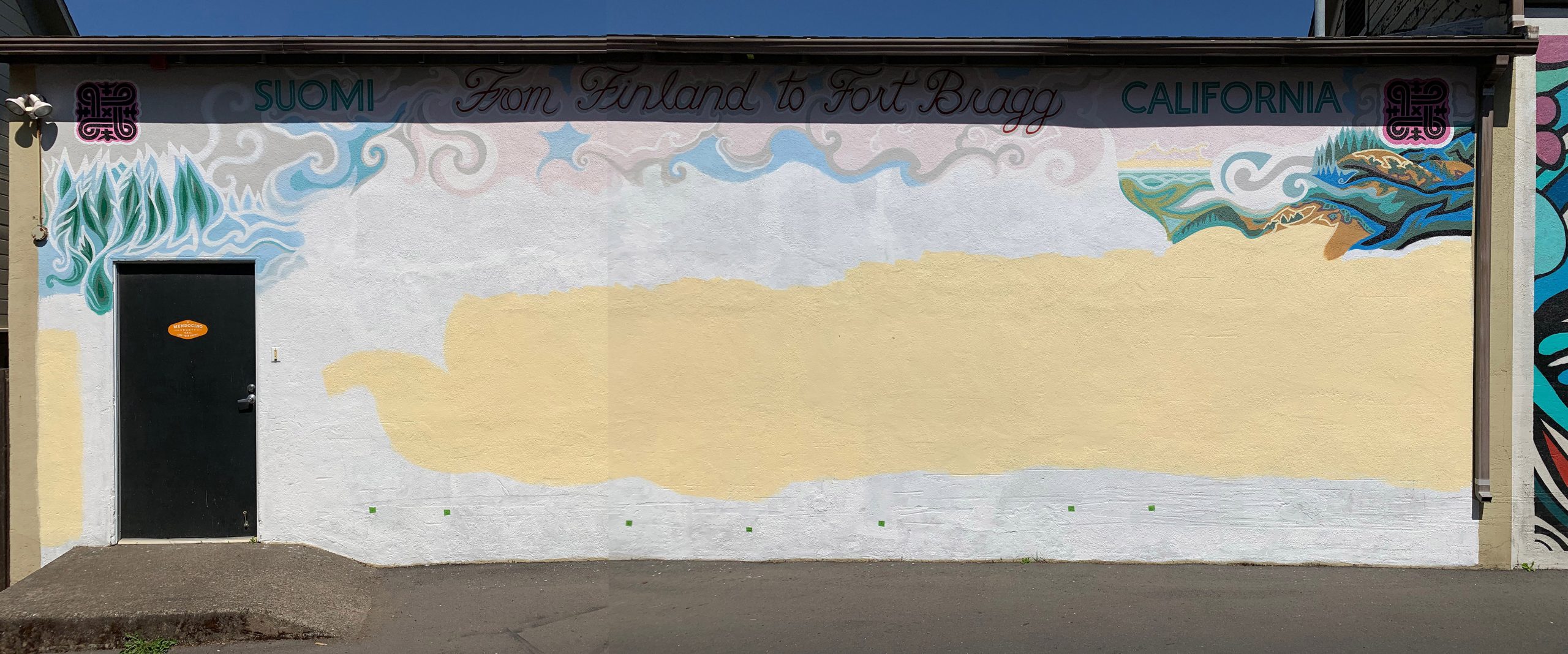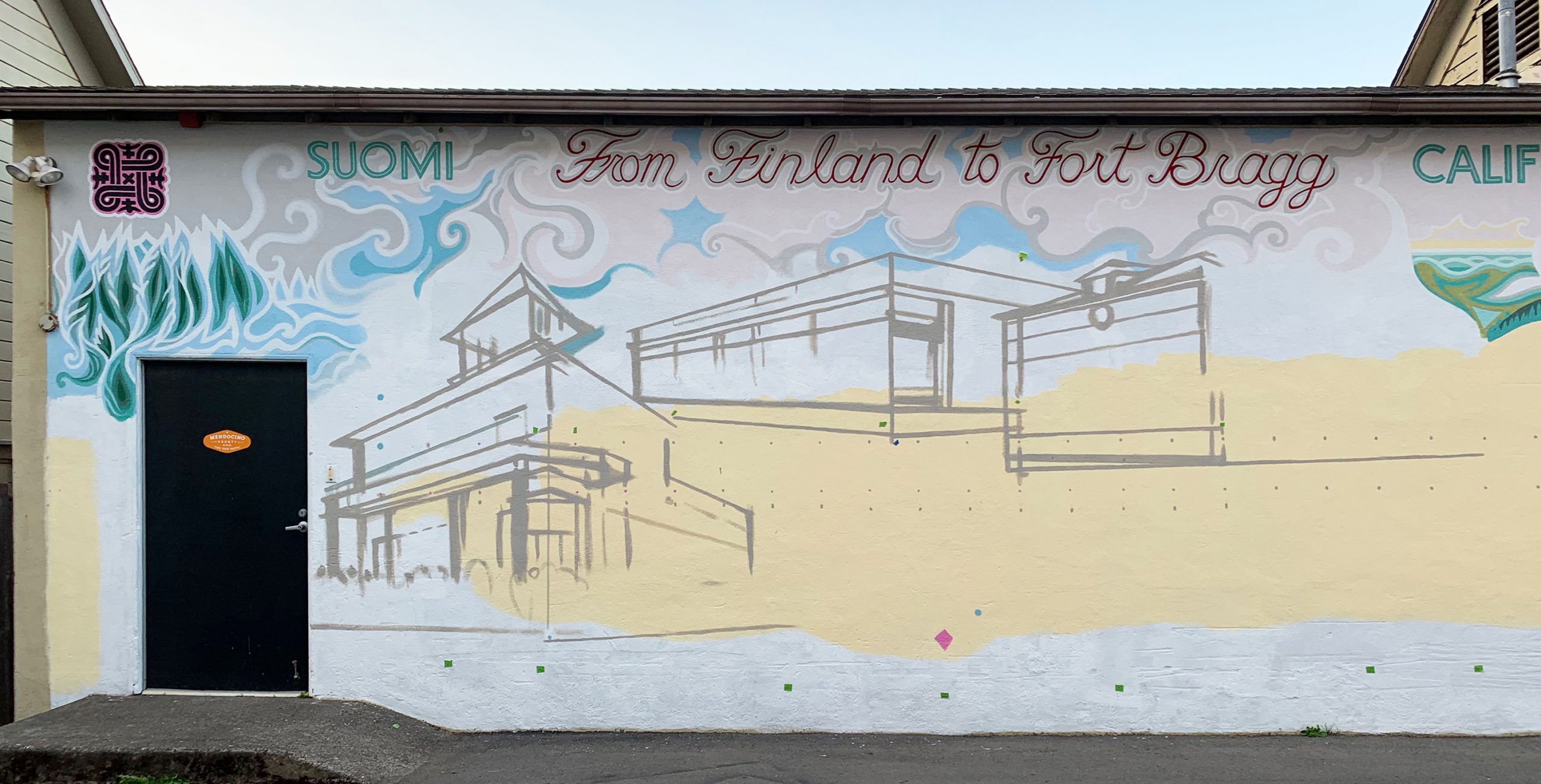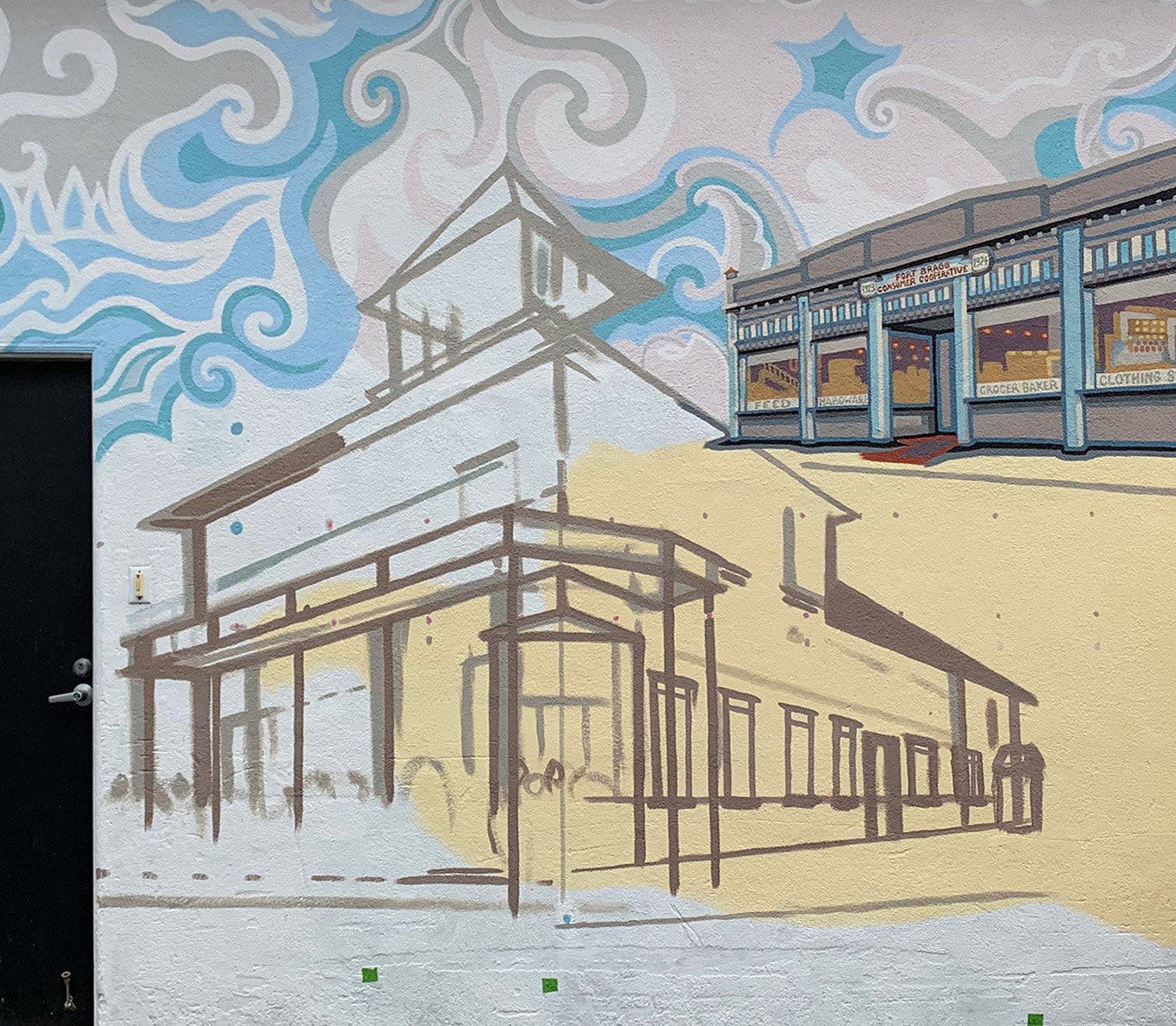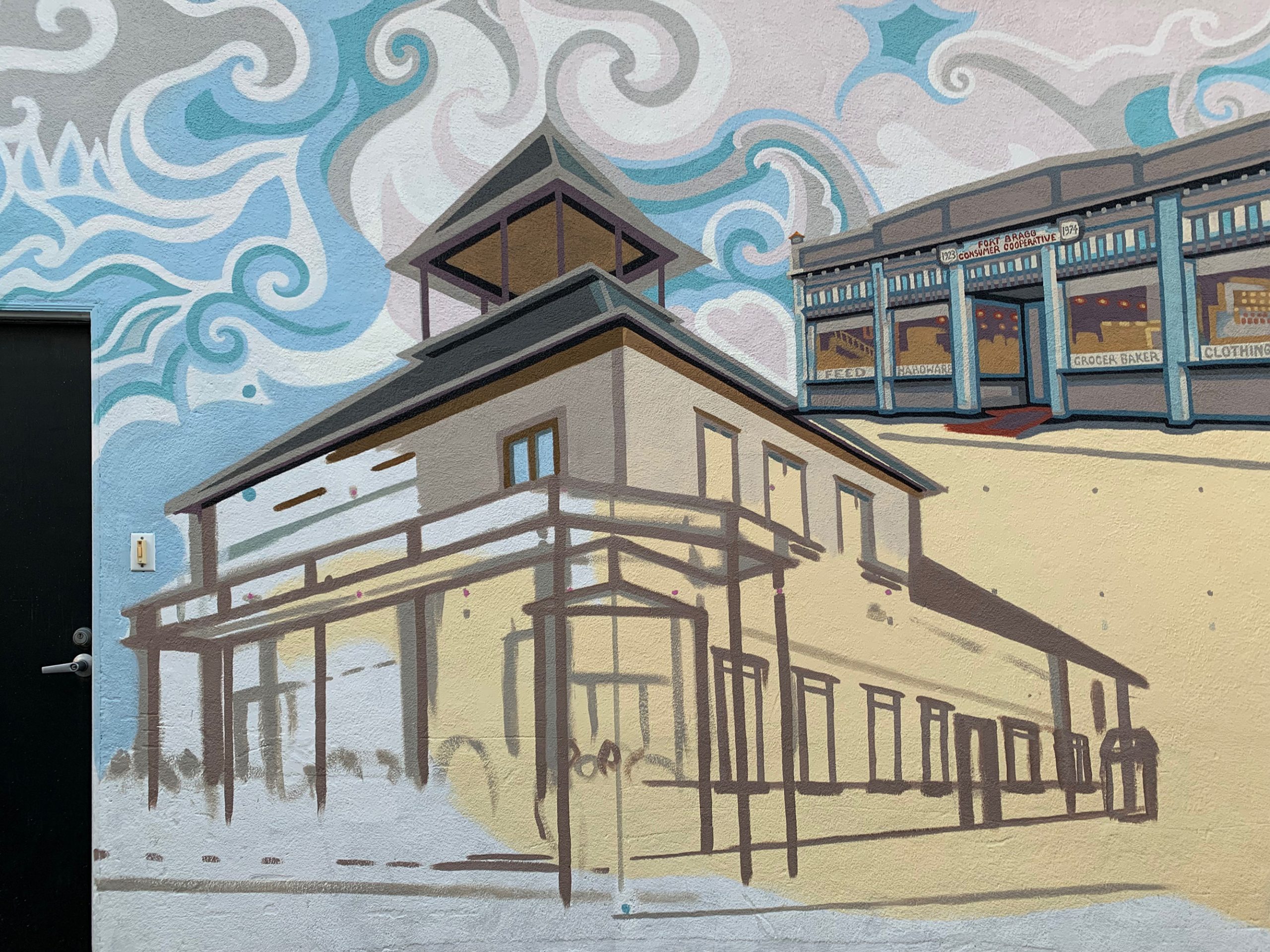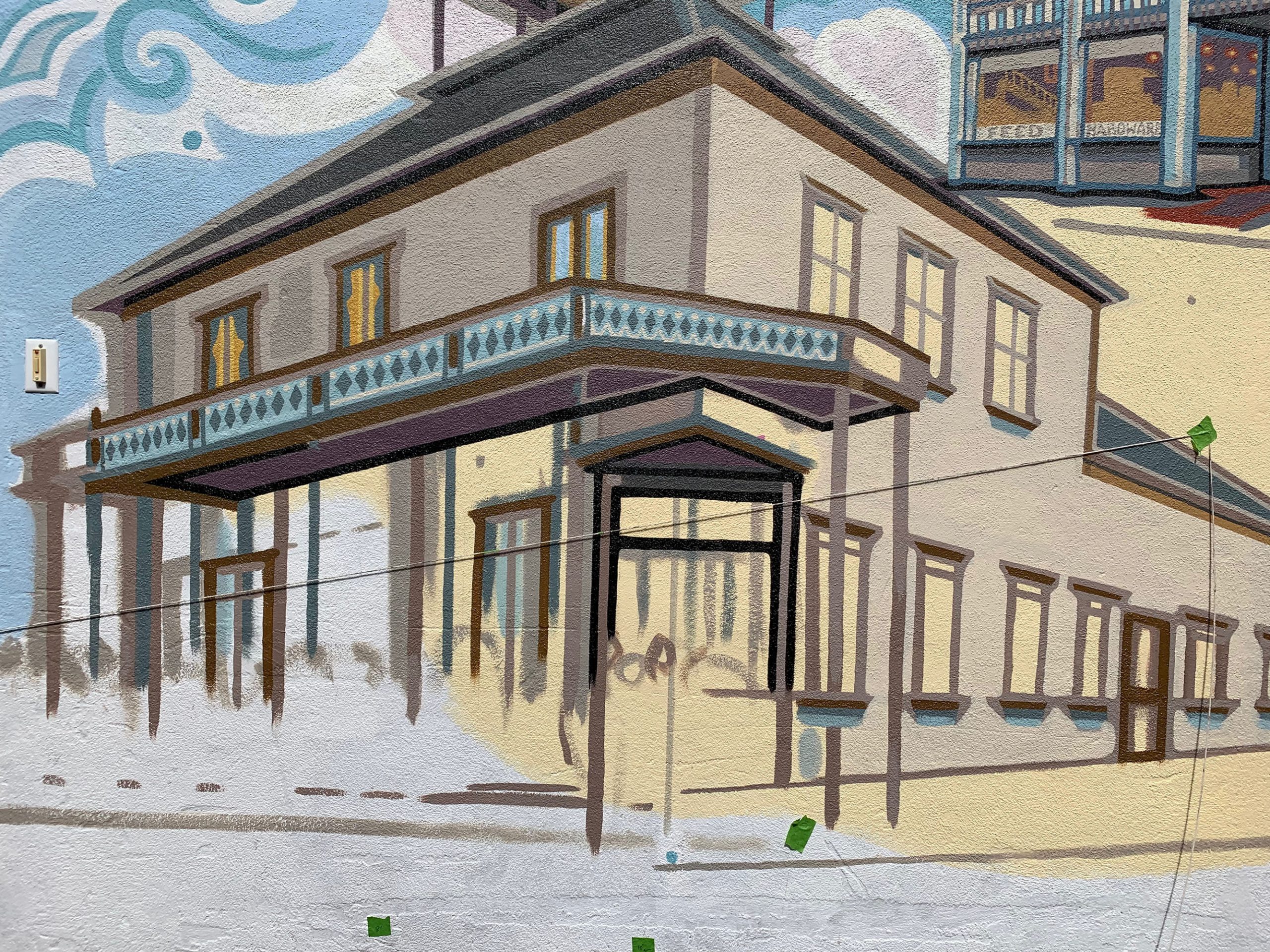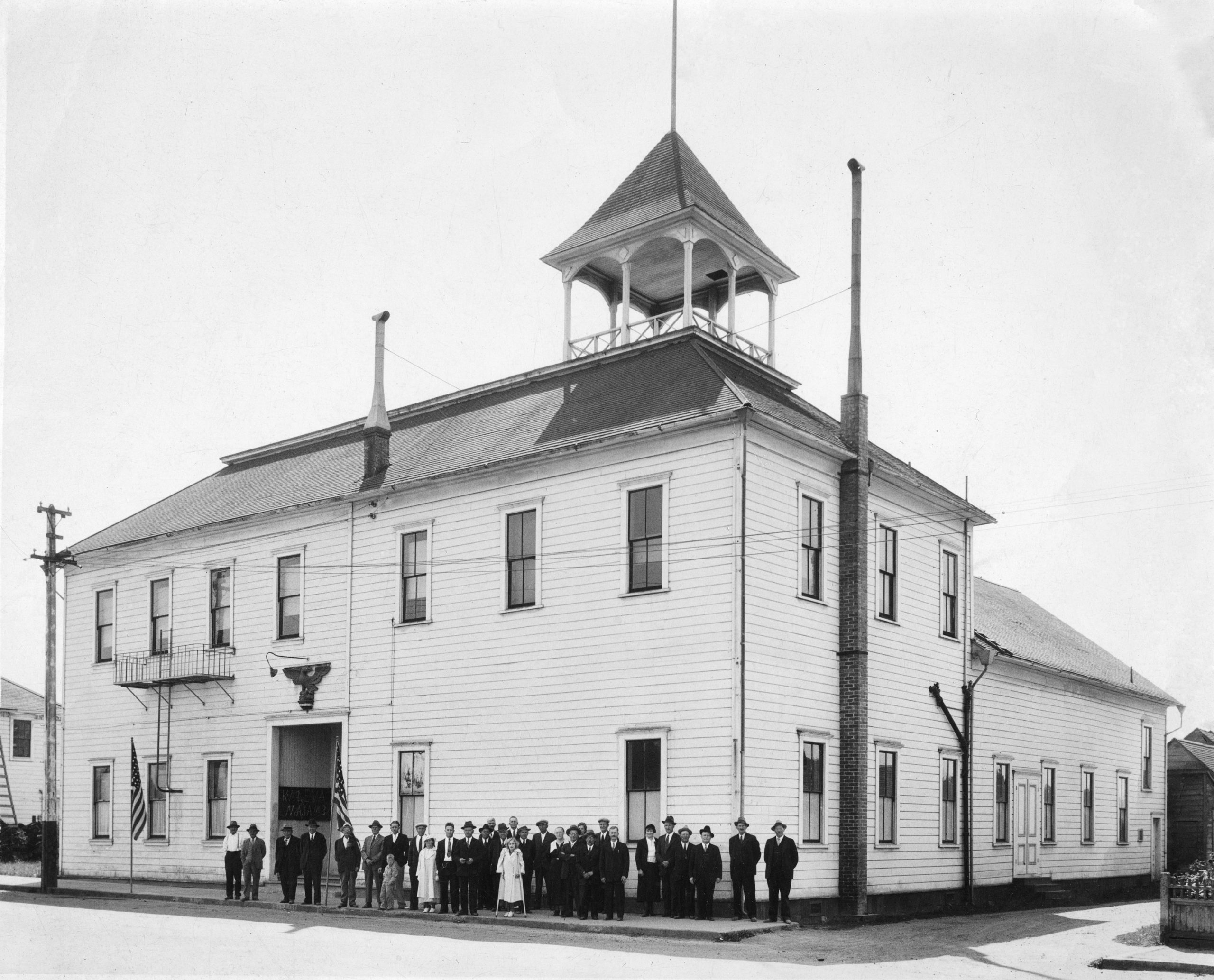The Finns of Fort Bragg built everything they needed for meetings, concerts, plays, lectures, dances and more.
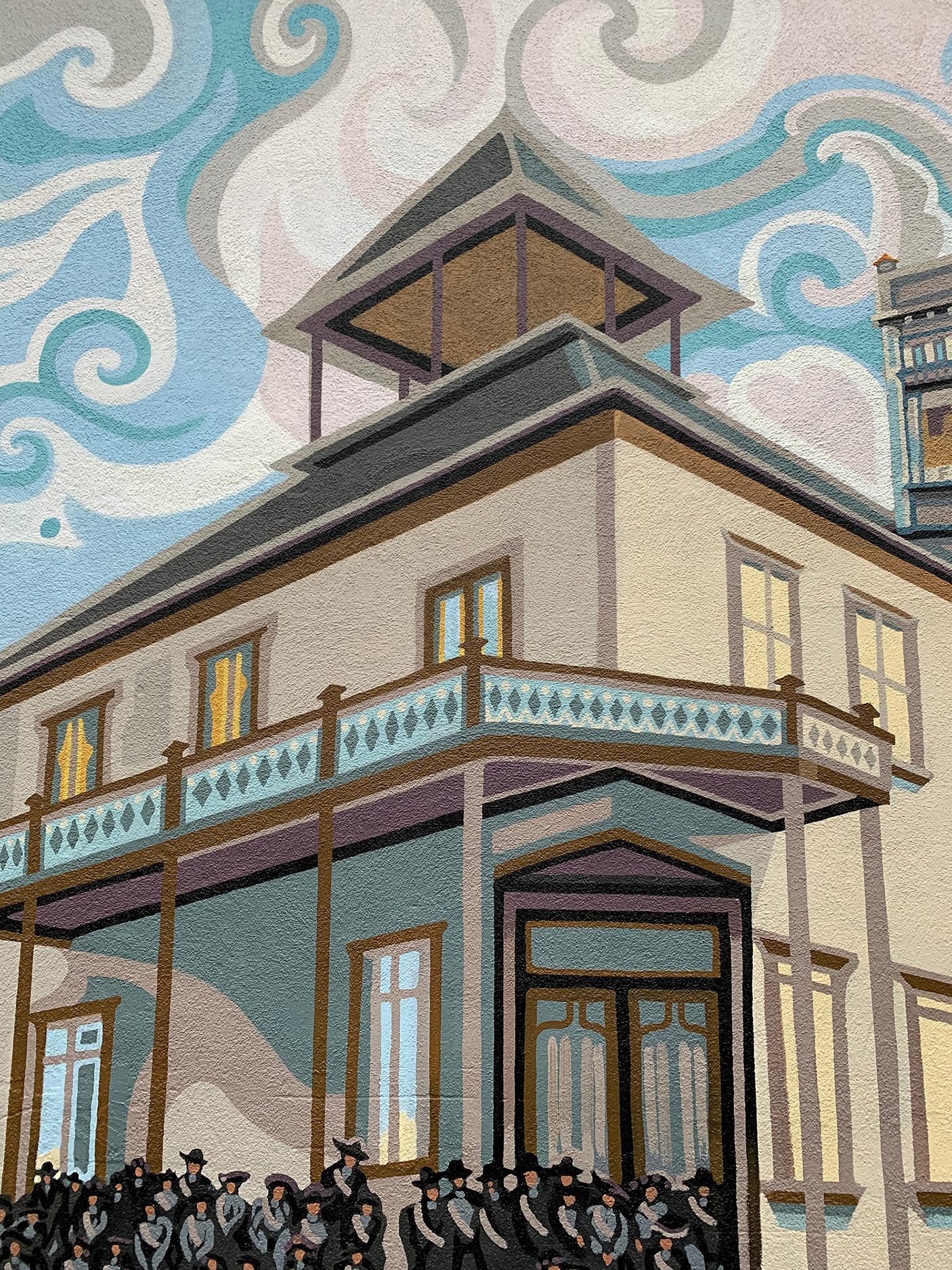
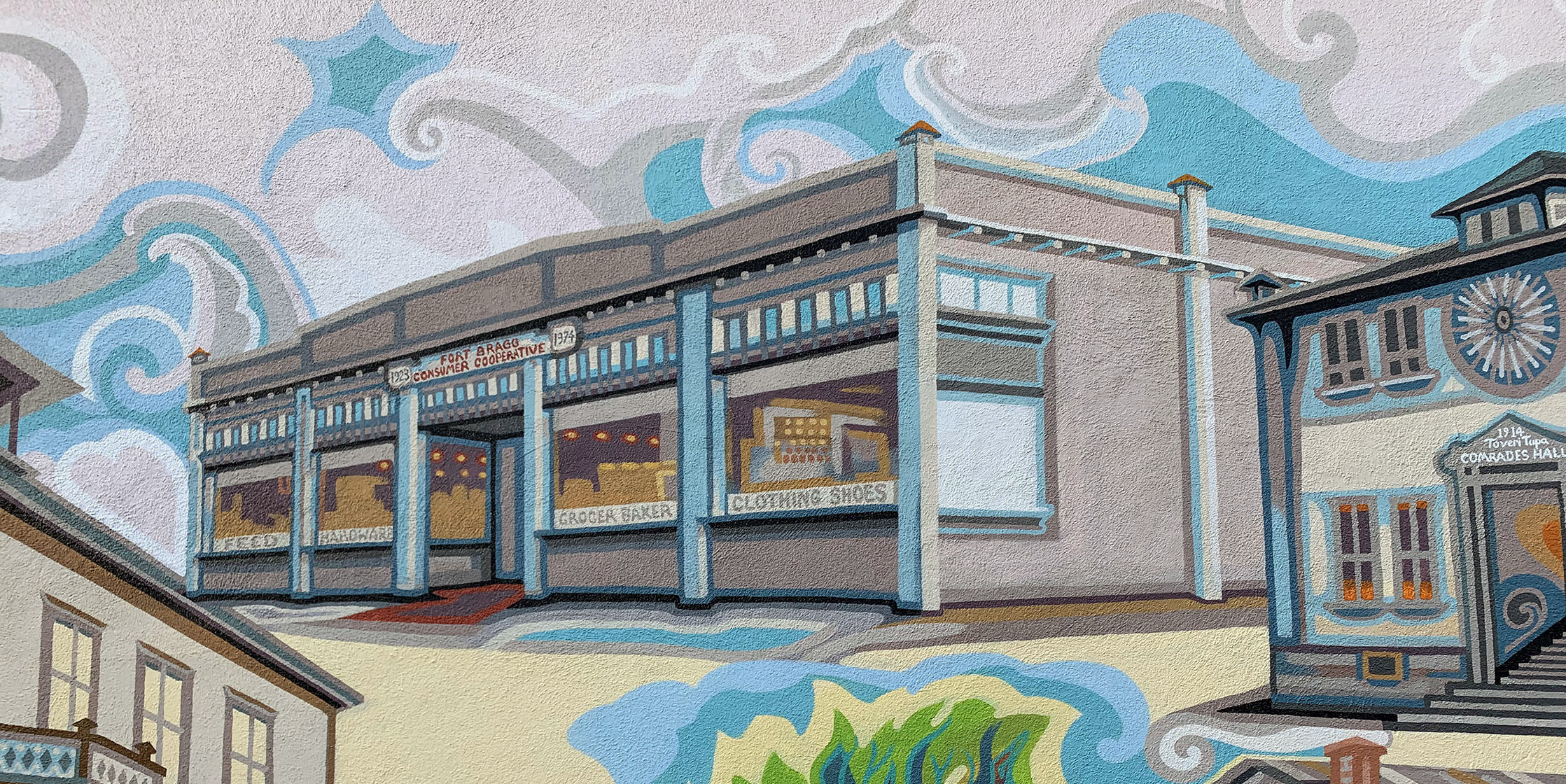

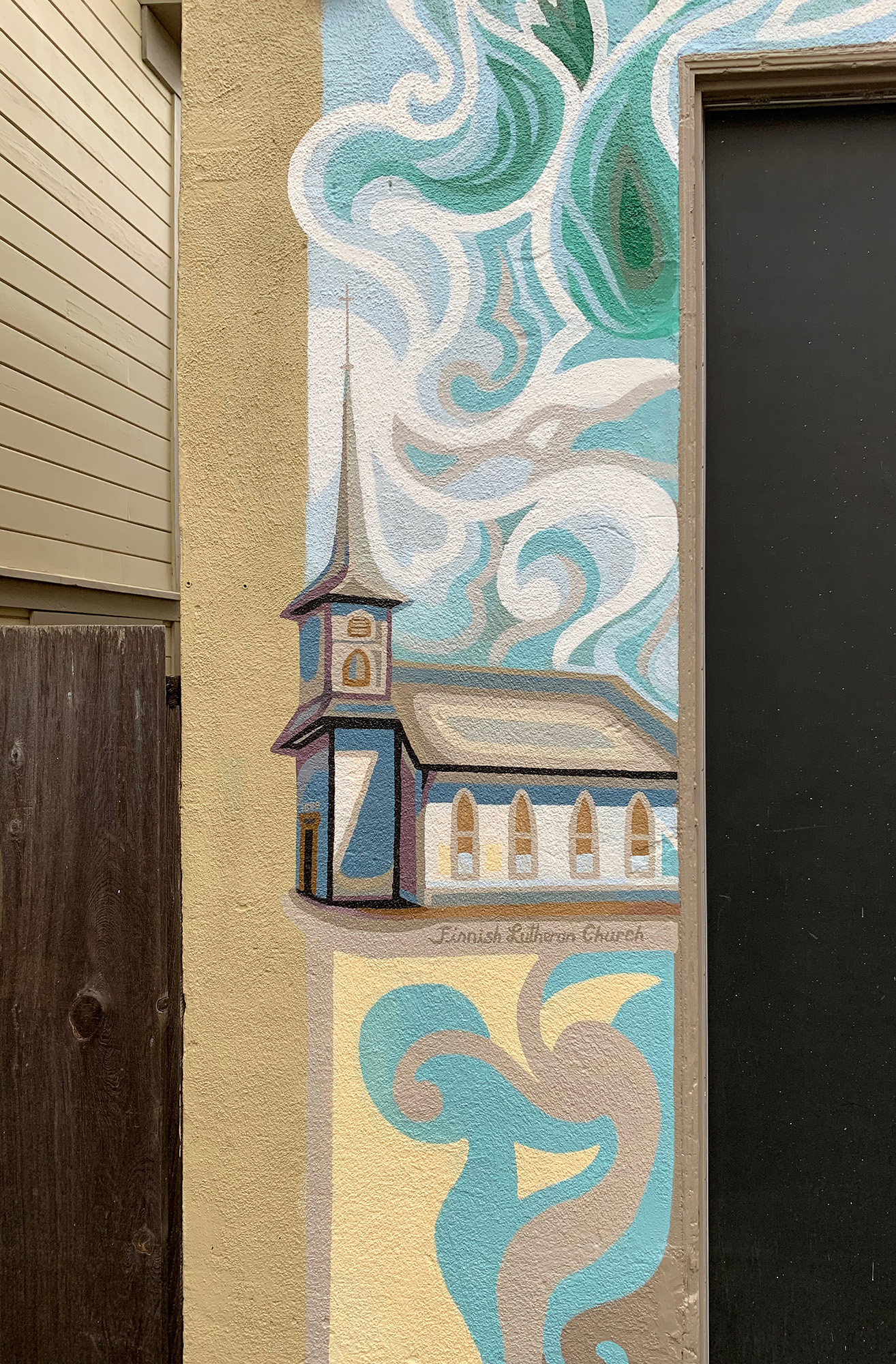
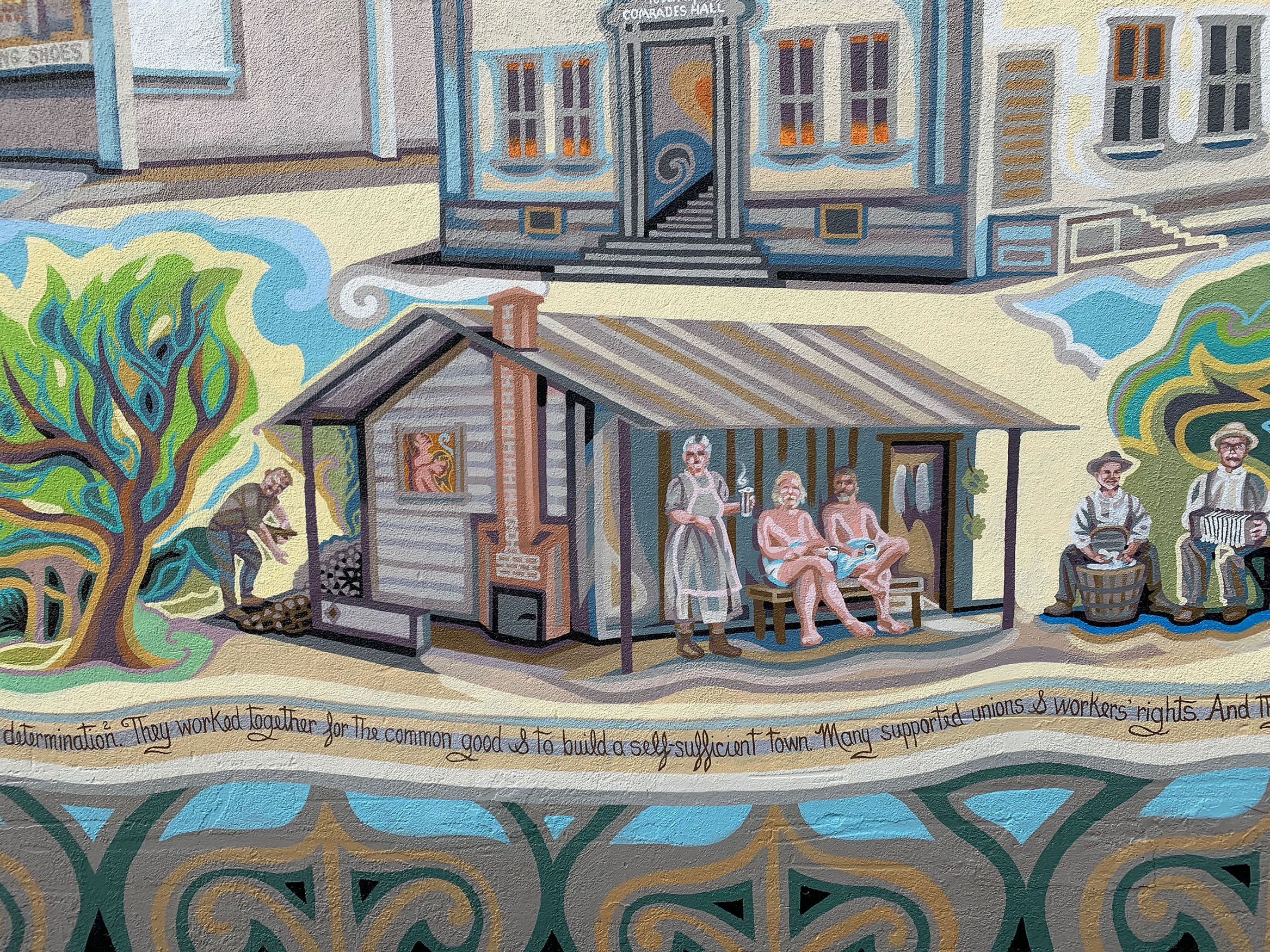
Here is how the painted architecture started…
The image below is a demonstration of how architecture is drawn using linear perspective, where the diagonal lines created by parallel faces of a 3-d structure converge on a vanishing point when portrayed on a 2-d (flat) surface.
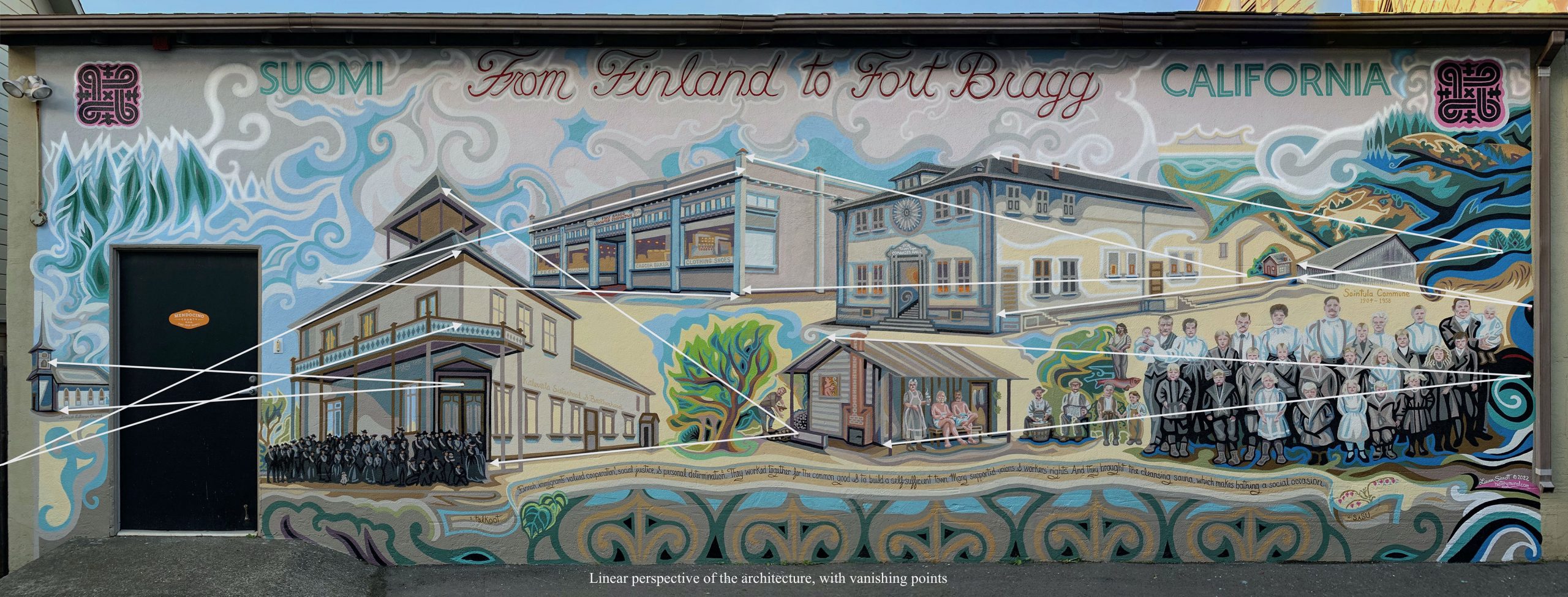
Kalevala Hall
The Finnish Temperance Society built a hall at 430 Redwood Avenue in 1895. They also established a boarding house for laborers who wanted something other than a life of hard work/get drunk in a saloon/repeat.
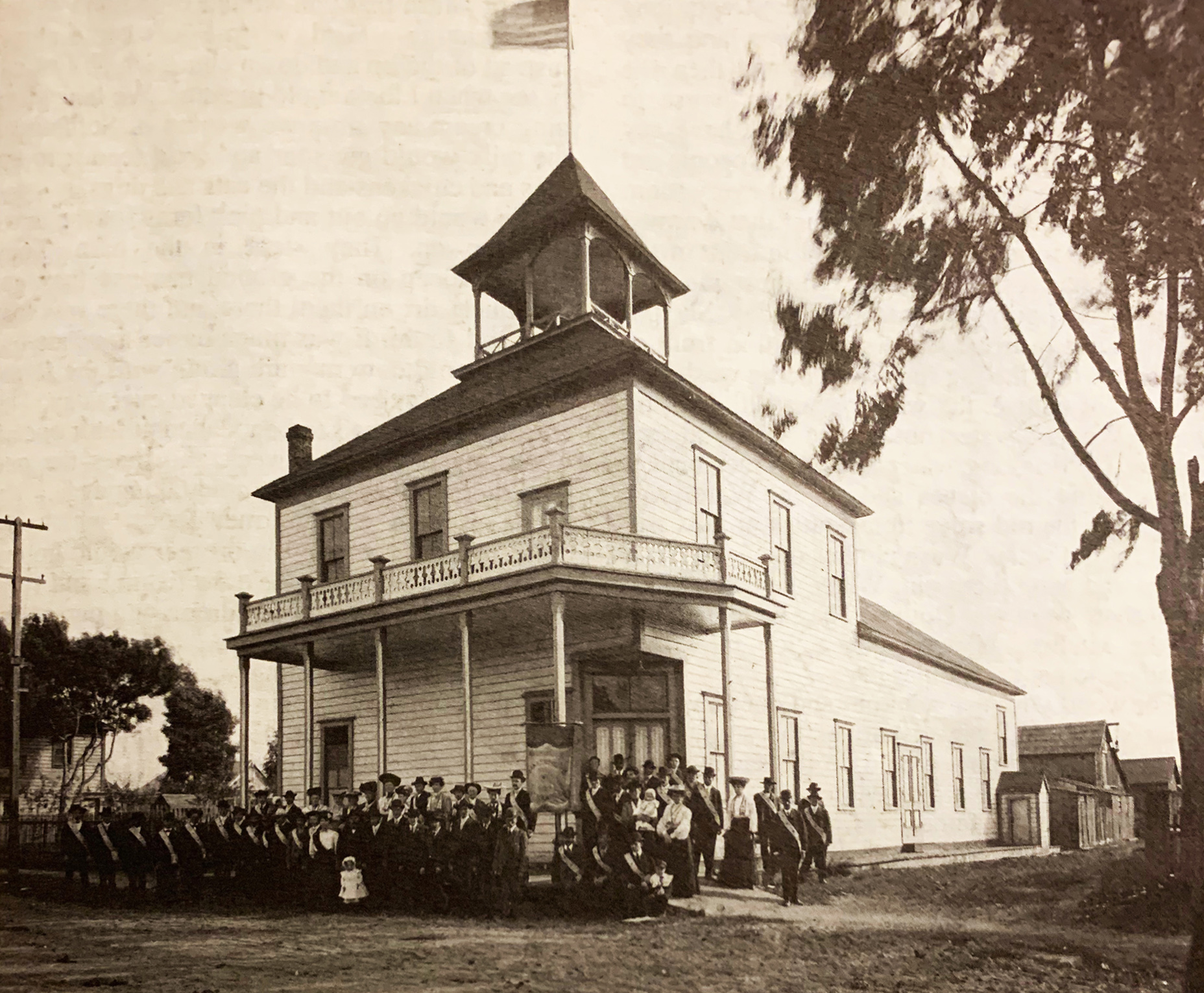

Finns in America began organizing in the 1880s to counter the destructive effects of alcohol on miners and timber workers. Called Lännen Toivo (Hope of the West), the Finnish Temperance Societies used their halls to put on concerts, stage plays, present poetry and prose recitations. They also had libraries and reading rooms.
The Nelson Brothers, by Allen Nelson, 2005. This detailed account of the lives of two second-generation Finnish brothers from Fort Bragg is a valuable resource.
The Fort Bragg Kalevala Brotherhood was chartered in 1897, the Sisterhood a year later. They bought the hall in 1920, just as the United States enacted Prohibition. This outlawing of alcohol was the ultimate goal of the Temperance Society, who perhaps felt their work was complete.
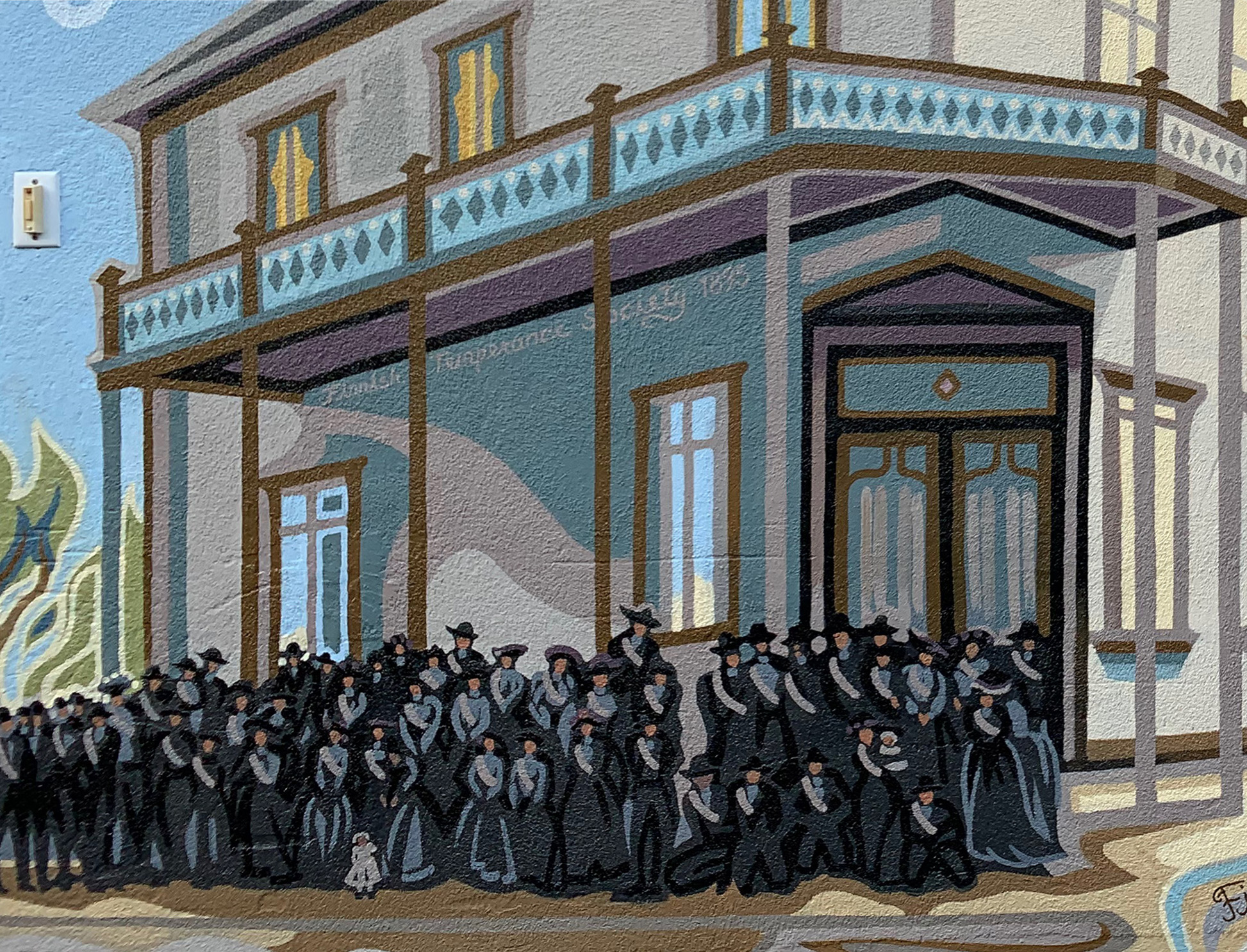
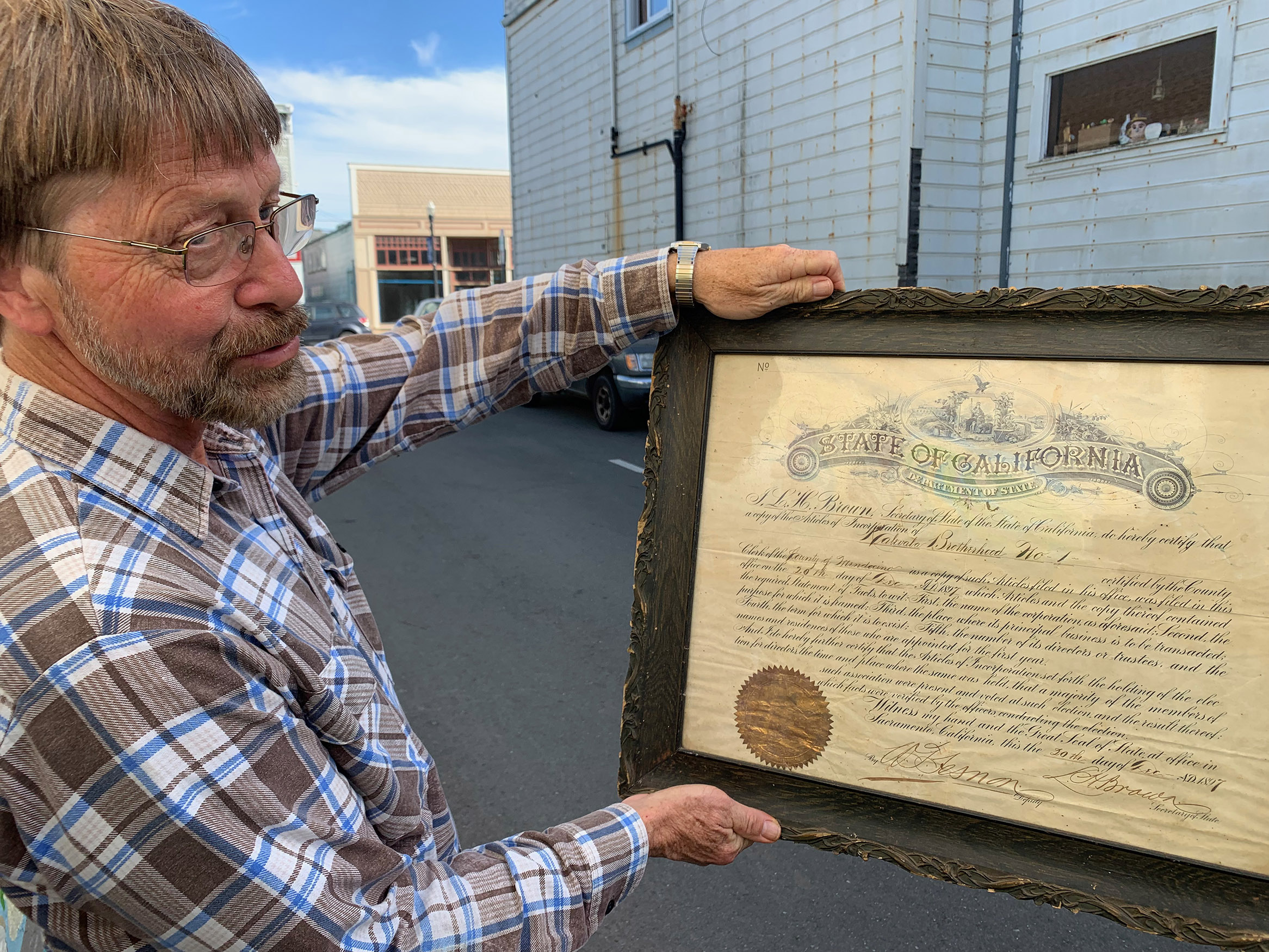
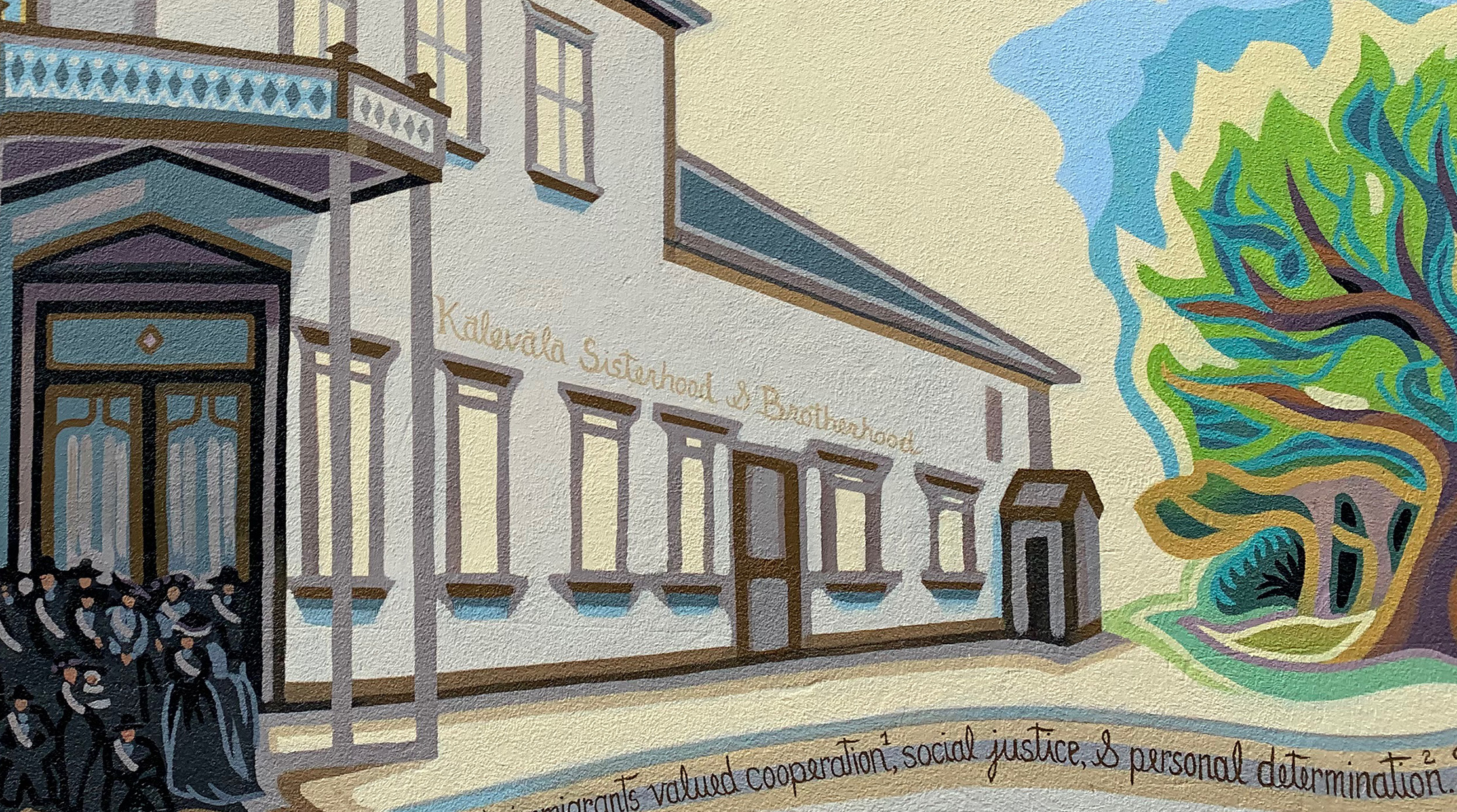
Historical Society member David Maki holds the Fort Bragg chapter of the Kalevala Brotherhood’s founding document (center).
The Kalevala lodges were formed to enhance community cohesion and prosperity and to keep Finnish culture alive.

The Kalevala is considered the national epic of Finland. The 19th c. poem tells fifty stories and was composed by Elias Lönnrot based on the centuries-old Finnish oral tradition, recitations gathered during eleven trips to various regions.
The hall continued to be a lively cultural center, with dances, musical programs, plays, lectures and mutual benefit organizing. The building still stands, though it looks very different and is now the Lions Hall.
See the photo progression below!
Toveri Tupa
Toveri Tupa (Comrades’ Hall) was built at 210 Corry St. in 1914 with all volunteer labor. For years, it was the largest hall in Fort Bragg, at 7,500 sq. ft.
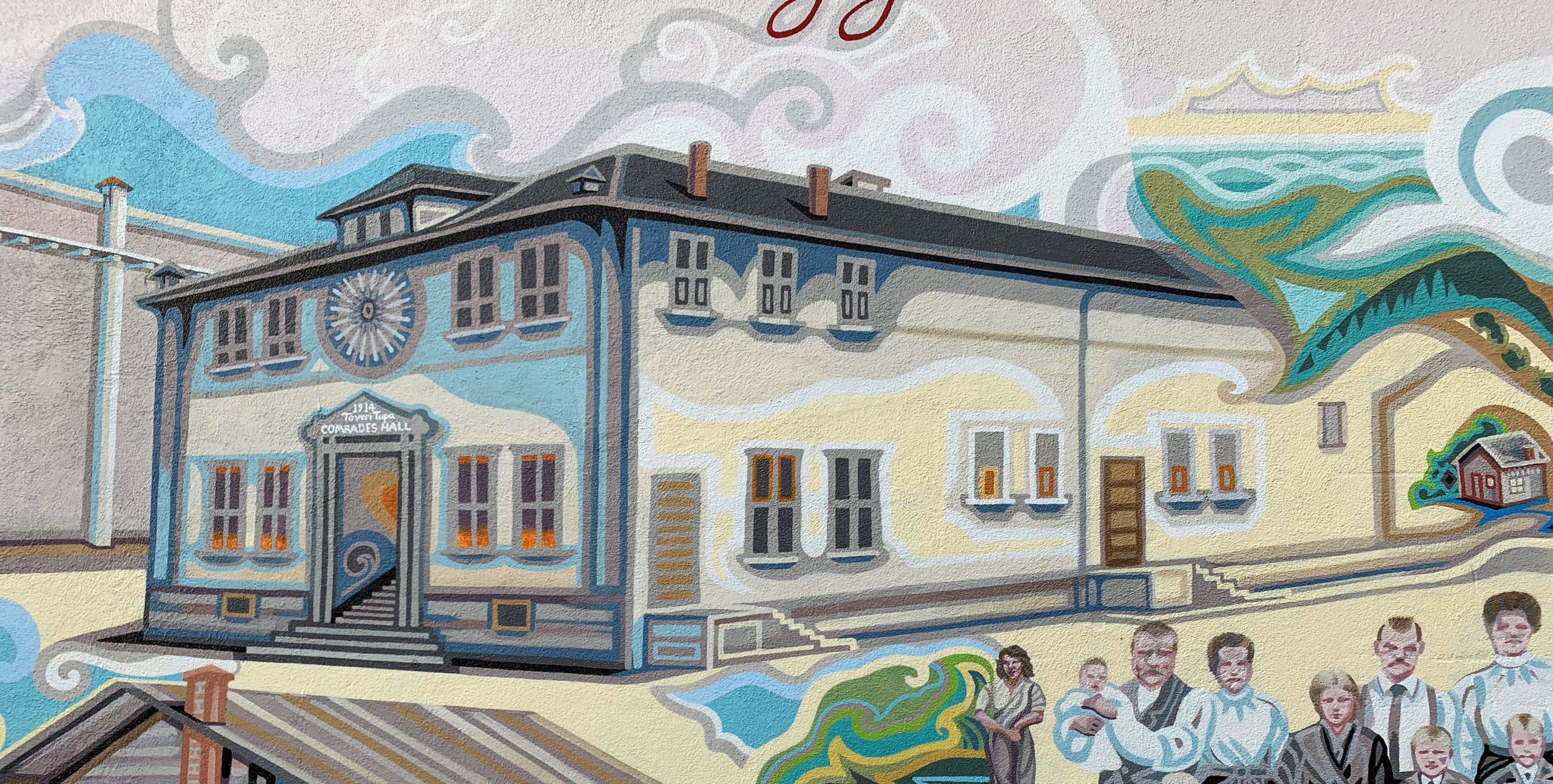
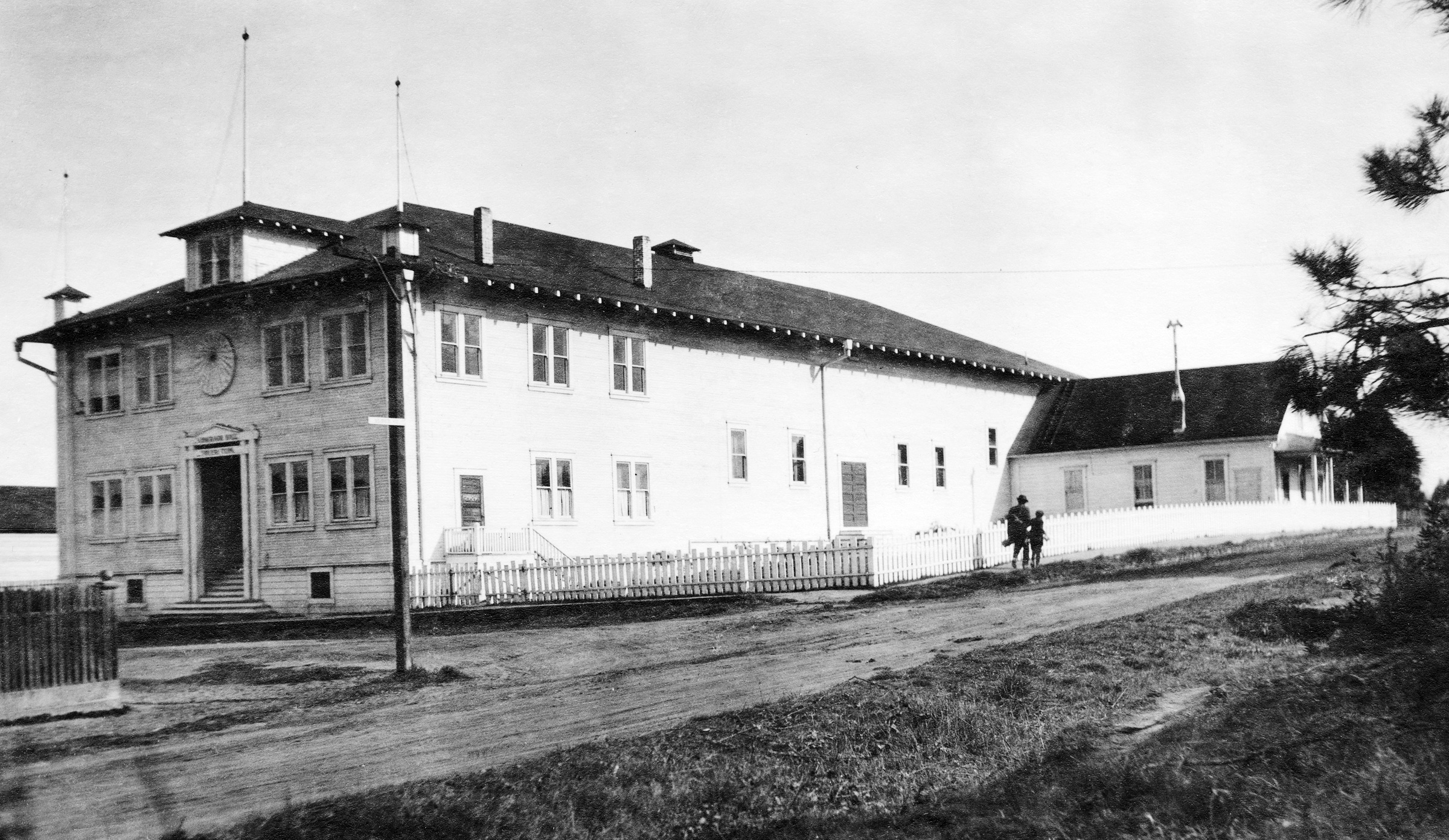
Many of the Finns in America strongly supported workers’ rights and the necessity of labor unions, as well as government regulation, to counter the wealth imbalance of capitalism. The Finnish Socialist Federation was established in 1906, one of several foreign language branches within the Socialist Party of America. Soon there were 260 local chapters, including in Fort Bragg. This is who built Toveri Tupa, with their own hands and pooling their own money for materials.

The hall was a venue for Finnish drama, music, lectures, and parties such as the progressive New Years Eve Ball.
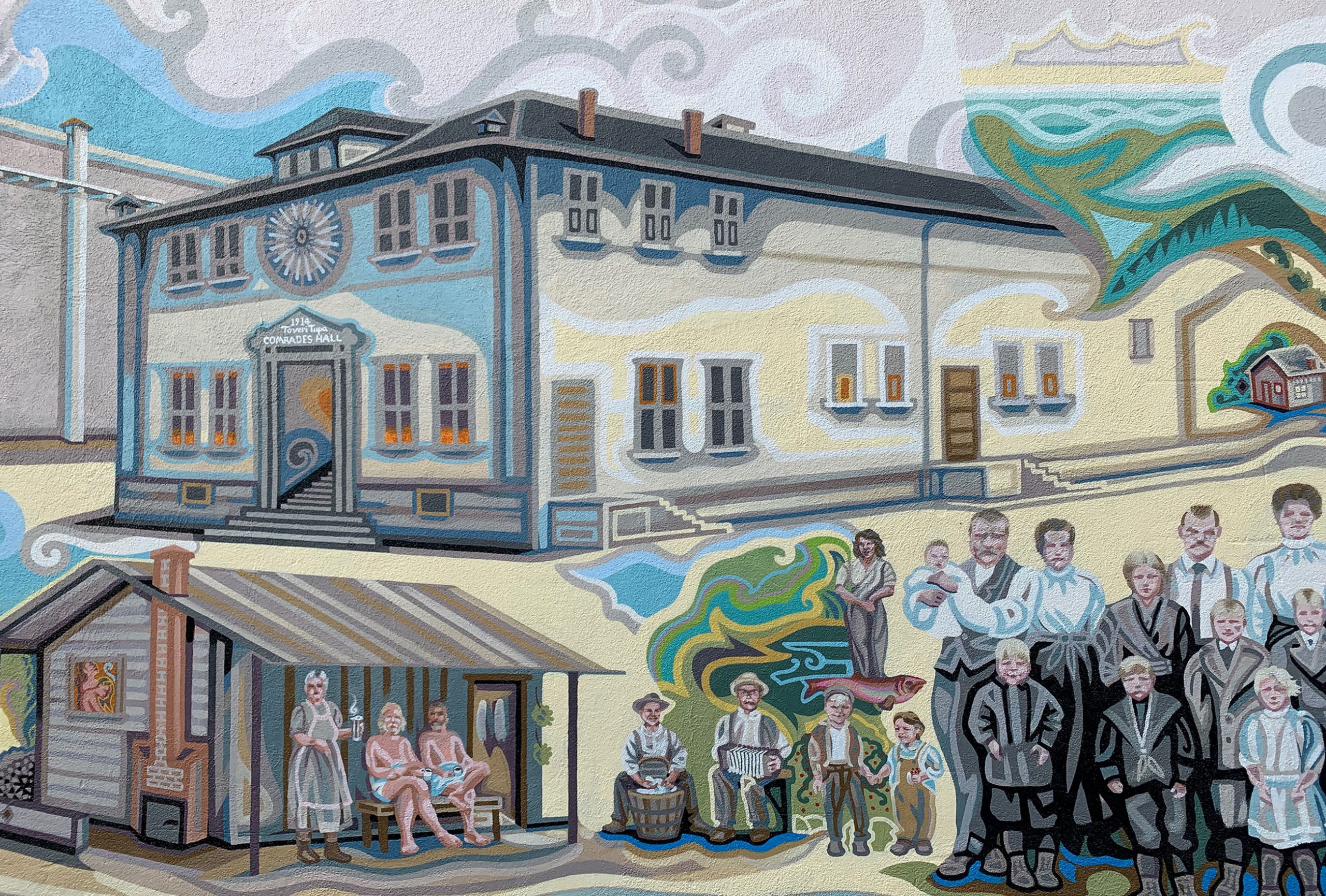

People helped voters register at the hall and marches would begin there.
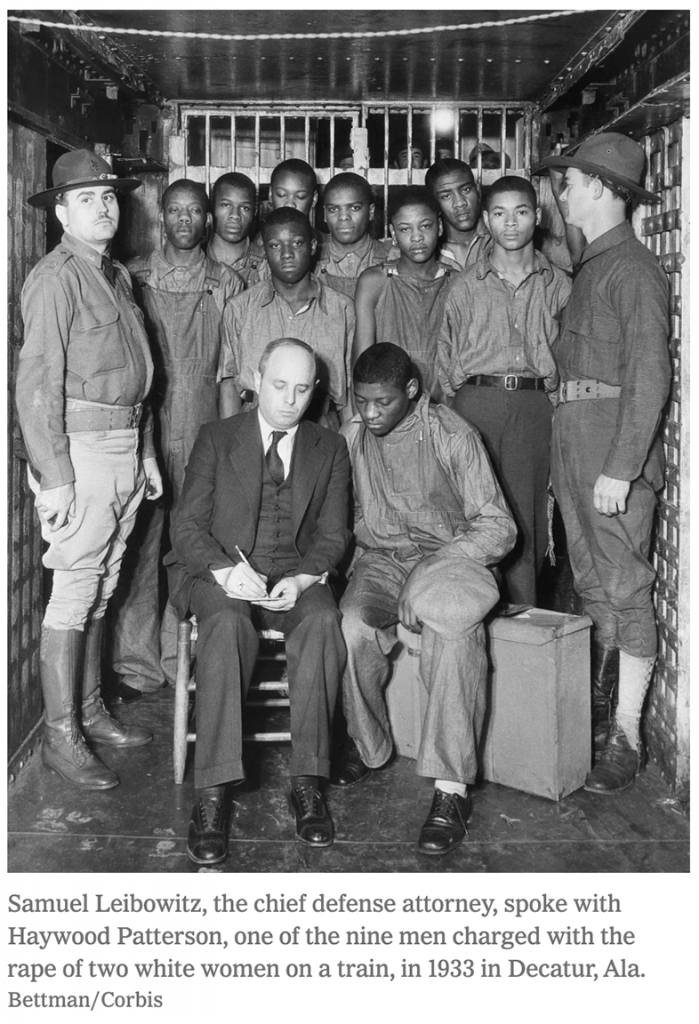
One of many remarkable events to take place at Toveri Tupa was a presentation regarding the infamous Scottsboro trial in 1933, in which 9 black boys were falsely accused of rape in Alabama. The series of trials and appeals illustrated extreme injustice and gradually the truth emerged. An event was held right here about the case, with speakers Lester Carter ( a white youth who was an important defense witness), and Mrs. Jane Patterson (mother of one of the convicted boys).
During WWII, it became the International Workers Order, Redwood Lodge No. 3893, and in 1946, the Fort Bragg Labor Temple for trade unions.
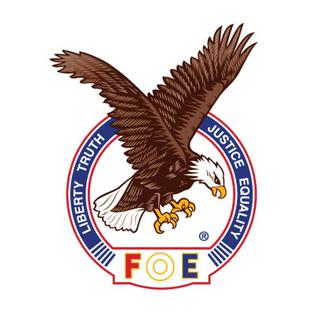
In 1960 the building became home to the Fraternal Order of the Eagles, dedicated to the arts and to…
“the spirit of liberty, truth, justice, and equality, to make human life more desirable by lessening its ills, and by promoting peace, prosperity, gladness and hope.”
The glowing orange in the windows represents the many, many events that took place within these walls. People learned to dance here, heard an amazing trombone player, won a dart tournament, met their future spouse…
Most recently it was home to the Gloriana Musical Theater. However, the Fort Bragg Eagles Aerie Number 833 suffered membership attrition over the years and then difficulties during the pandemic led to its closure and sale.
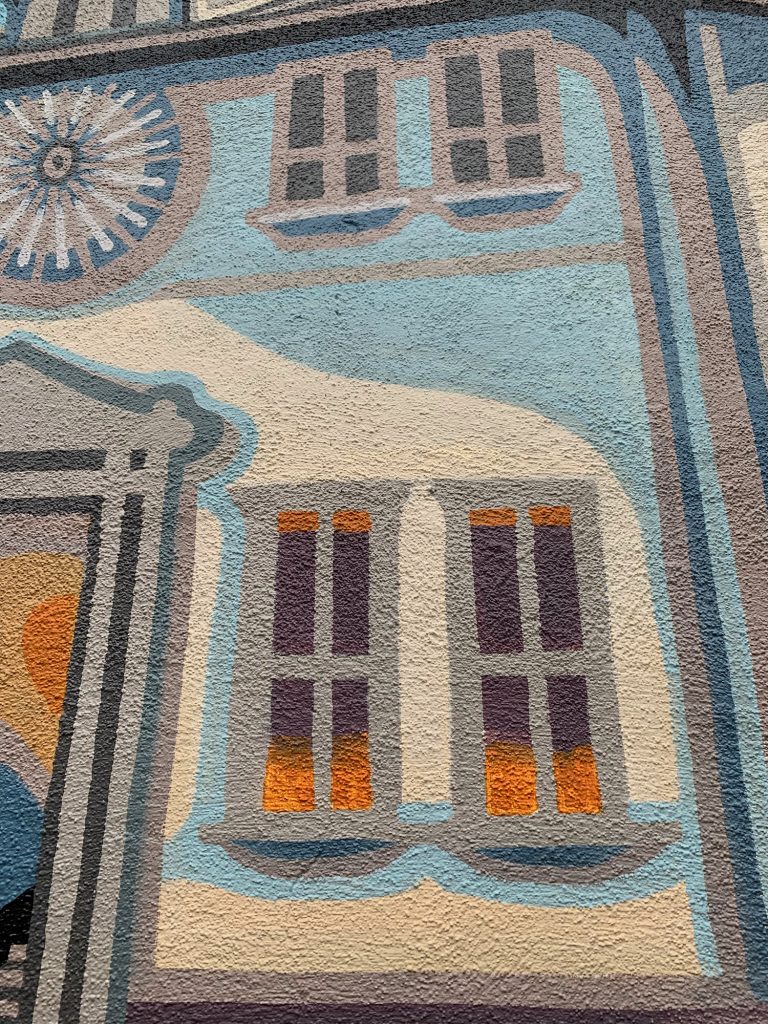
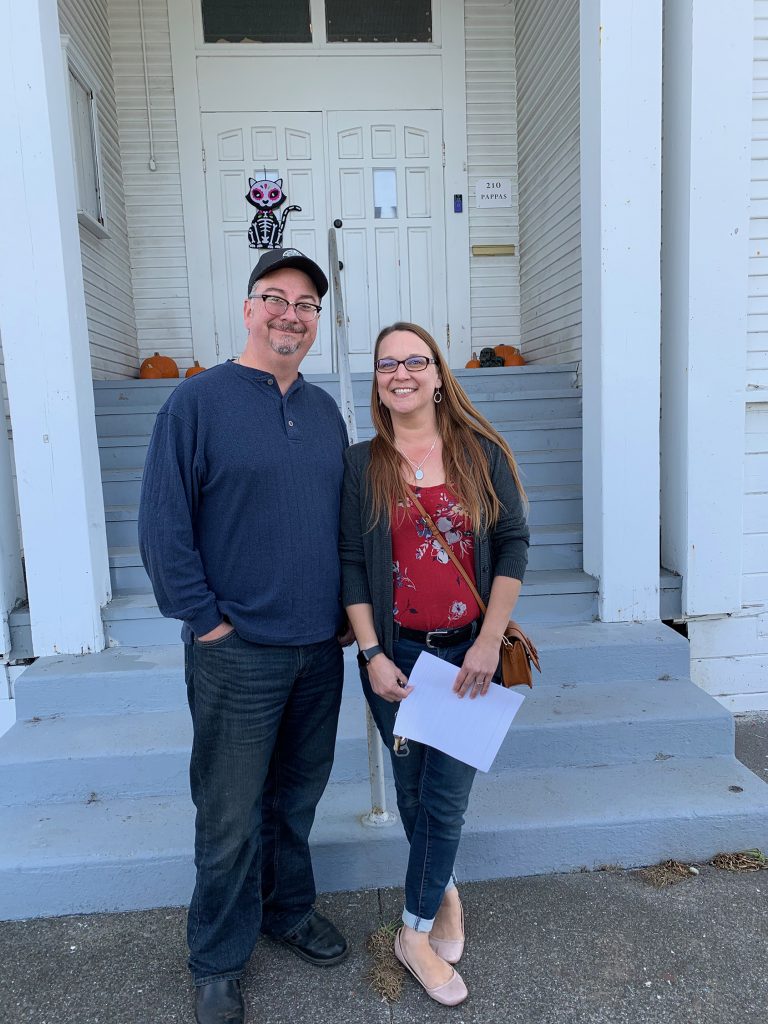
Fort Bragg lucked out when the building sold to Stathi and Miranda Pappas, who are committed to the large task of restoring the hall to something of its former glory. Stathi is the general Manager at the Skunk Train and an expert in vintage steam-powered machinery and restoration. Read that story here in the Mendocino Voice.
Consumer Co-op
The Fort Bragg Finns founded a consumer co-operative store in 1923. At the corner of Redwood and McPherson streets, it was a full service grocery, butcher, bakery, grain, feed, hay and hardware operation that soon had over 1,000 members.

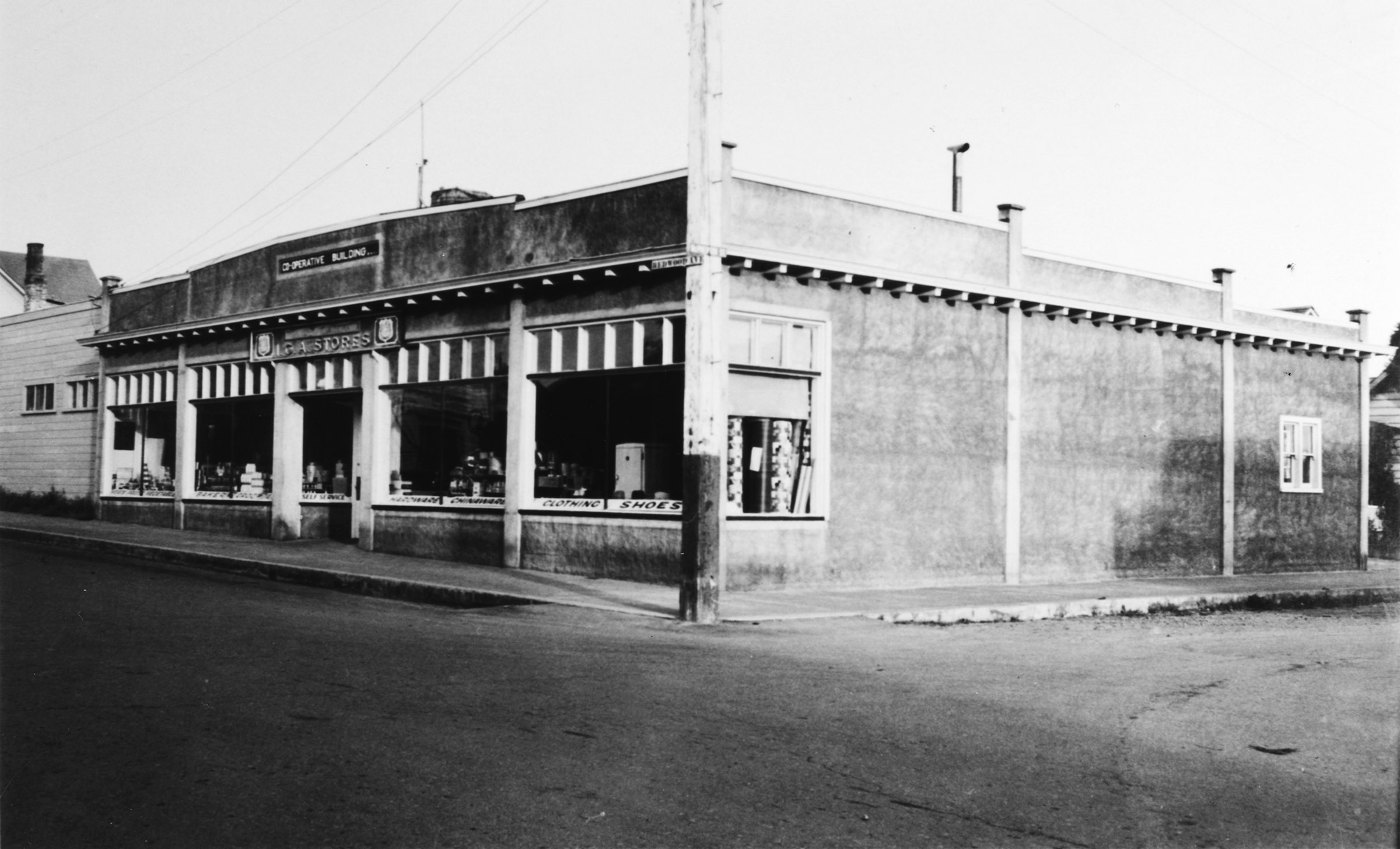

Named the Fort Bragg Cooperative Mercantile Corp., the original 10 board members were mostly Finnish workers and organization minutes were recorded in Finnish well into the 1940s. But of course the store was open to the public and welcomed everyone in the community to join.
During the early 1900s, American socialists were leaders in creating consumer co-ops around the country and the Fort Bragg Socialist Finns had discussed starting one in 1912. The decision against it was based on the fact that all transport would have to go through the Union Lumber Company which controlled the ships and rails, and also ran a company store.
By the time of its founding, the Fort Bragg Co-op was able to do its own transport by truck, taking farmers’ excess produce and eggs to a bigger market in Petaluma, and coming back with feed and other products at a fair price.
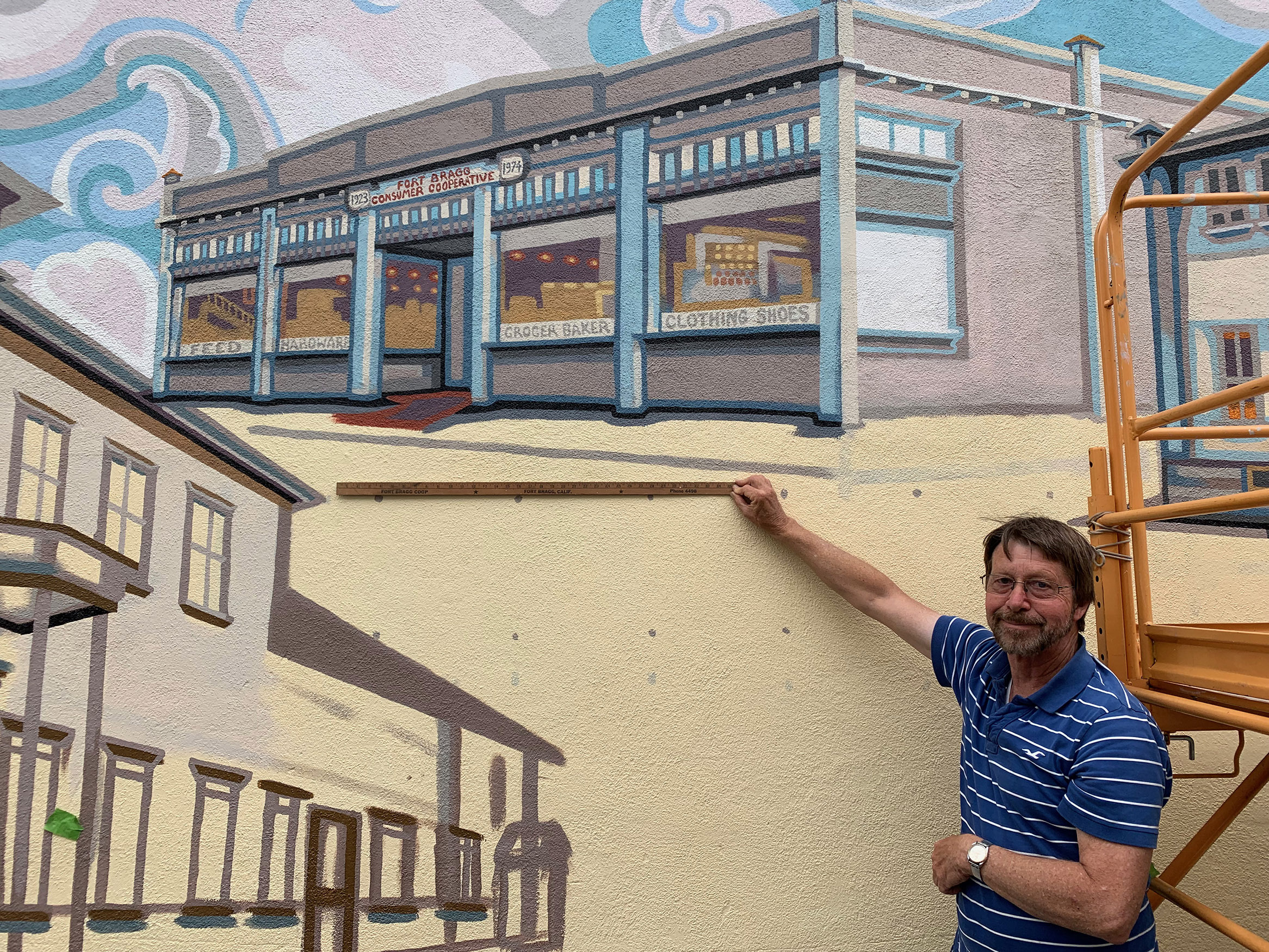


That wave of organizing after 1900 led to many co-ops being created across California and the nation. Associations of co-ops formed to gain strength in numbers. But excessively rapid growth led much of the network to crumble, and most co-ops were closed during the 1920s. By the time the US economy crashed in 1929, there were only 5 co-ops left in California, and Fort Bragg was one of them!
“Since the failure of the Pacific Cooperative League in 1921, with the consequent disappearance of almost all co-operative societies in the state, California has been nearly a complete co-operative wilderness. The emergence of such societies as that at Fort Bragg, Solvang, the Jewish Bakery at Los Angeles and a few others is most encouraging.”
Consumer Cooperation – Organ of the Consumers’ Co-operative Movement in the U.S.A. Volumes 12-15, 1926, p. 166
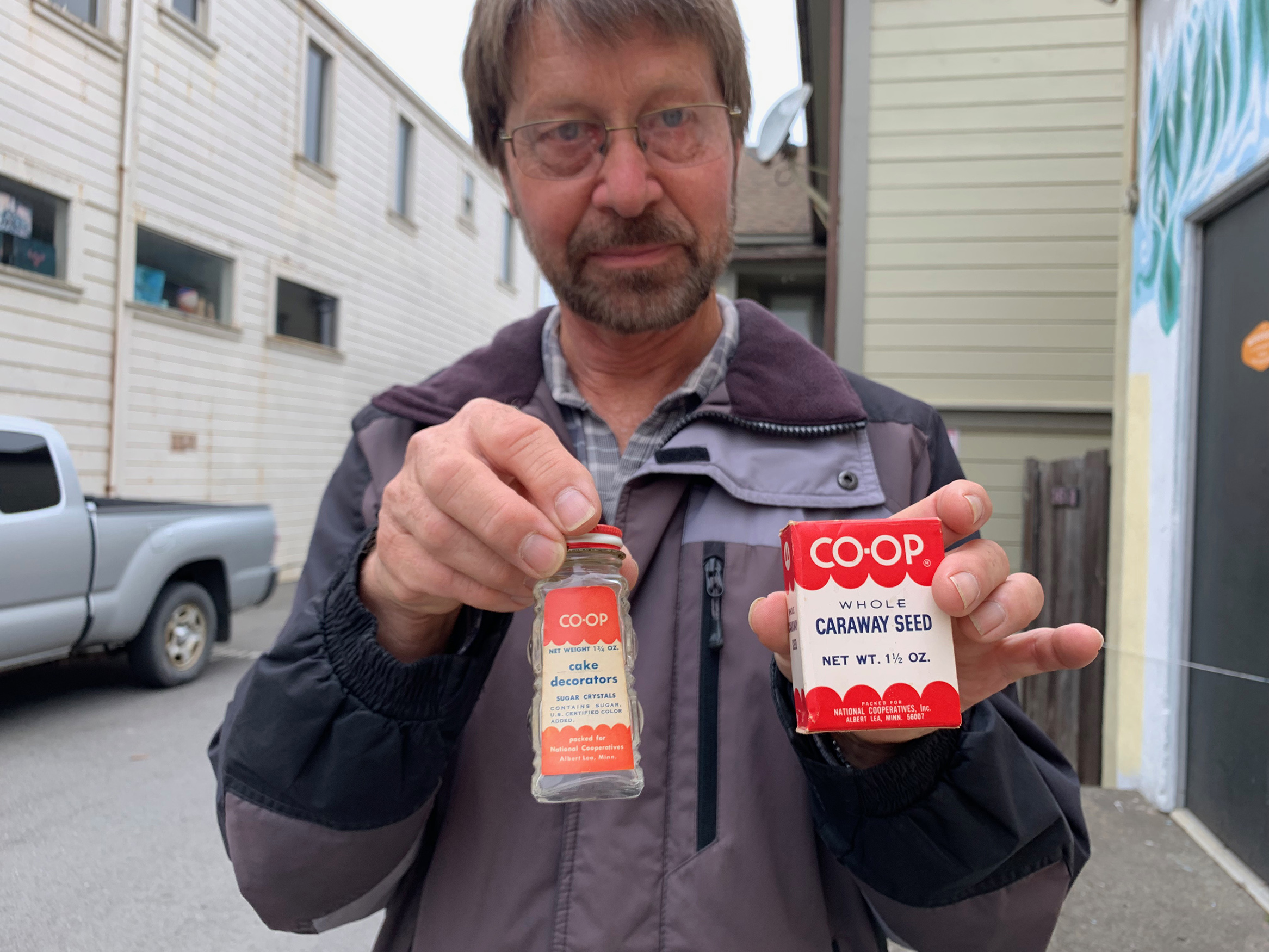
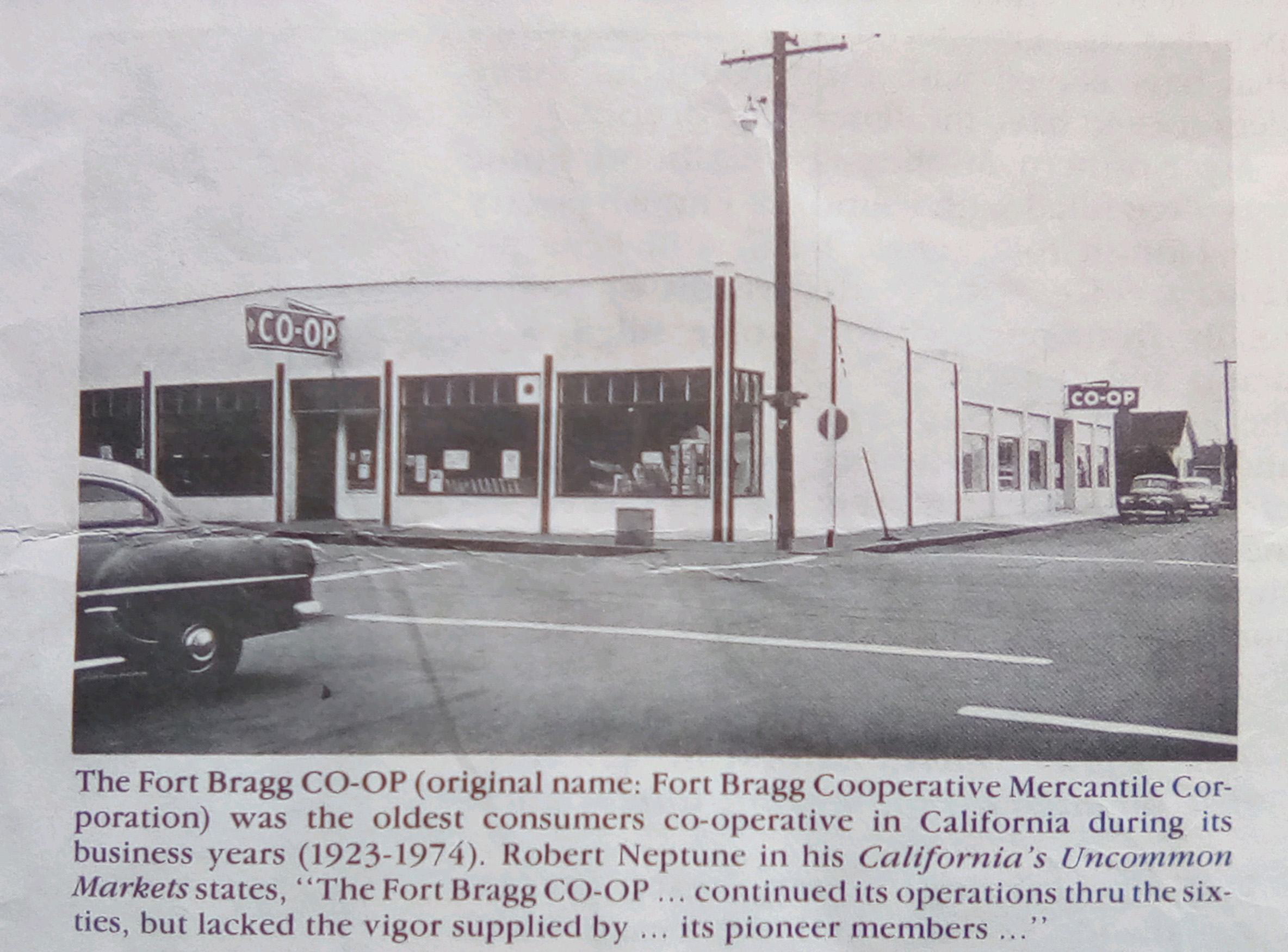

The Fort Bragg Co-op stayed open until 1974, making it one of the longest running (thus oldest) in the state at that time.
Finnish Lutheran Church
It is painted near the left edge of the mural, under a sky that morphs into the snowy Finnish forest.
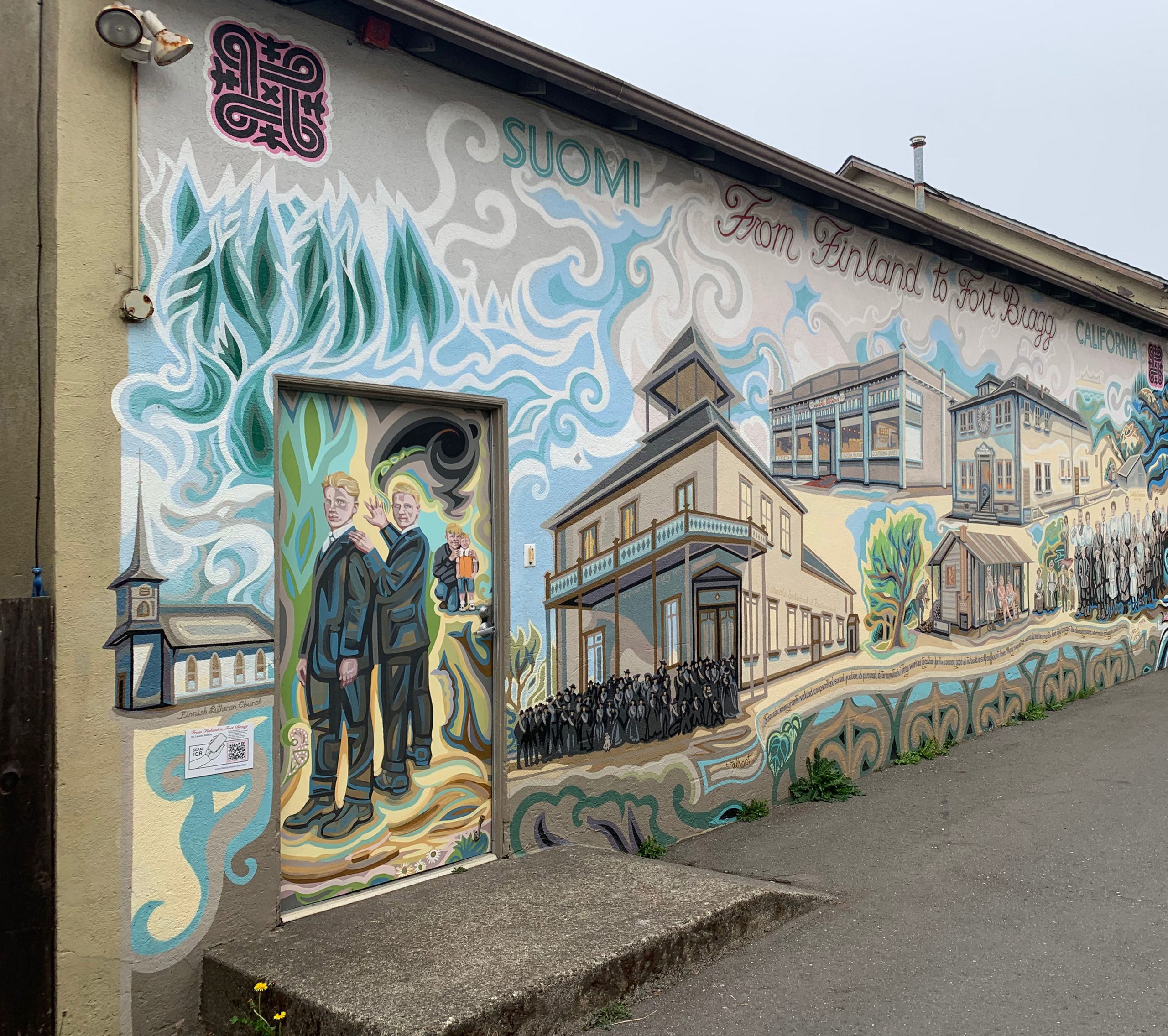
The Finnish Evangelical Lutheran Church was constructed by Finnish immigrants in 1889 at the corner of Redwood Avenue and Corry Street.

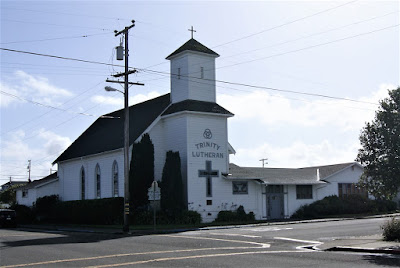
Services were conducted in Finnish until the 1950s, at which time an English service was added in the morning, the Finnish conducted in the afternoon.
“Founding and building the Finnish Evangelical Lutheran Church” in Makkerin blogi, 2017

One of the great things about painting history murals in public is that people can stop by your “studio” and tell you stories about what you are working on. Here, Lou Rossi and Paul Nylund recall the church pastor.
Now called the Trinity Lutheran Church, services are conducted in English by Reverend Randy A. Knutson, but many Finnish descendants are in the congregation and the heritage lives on.
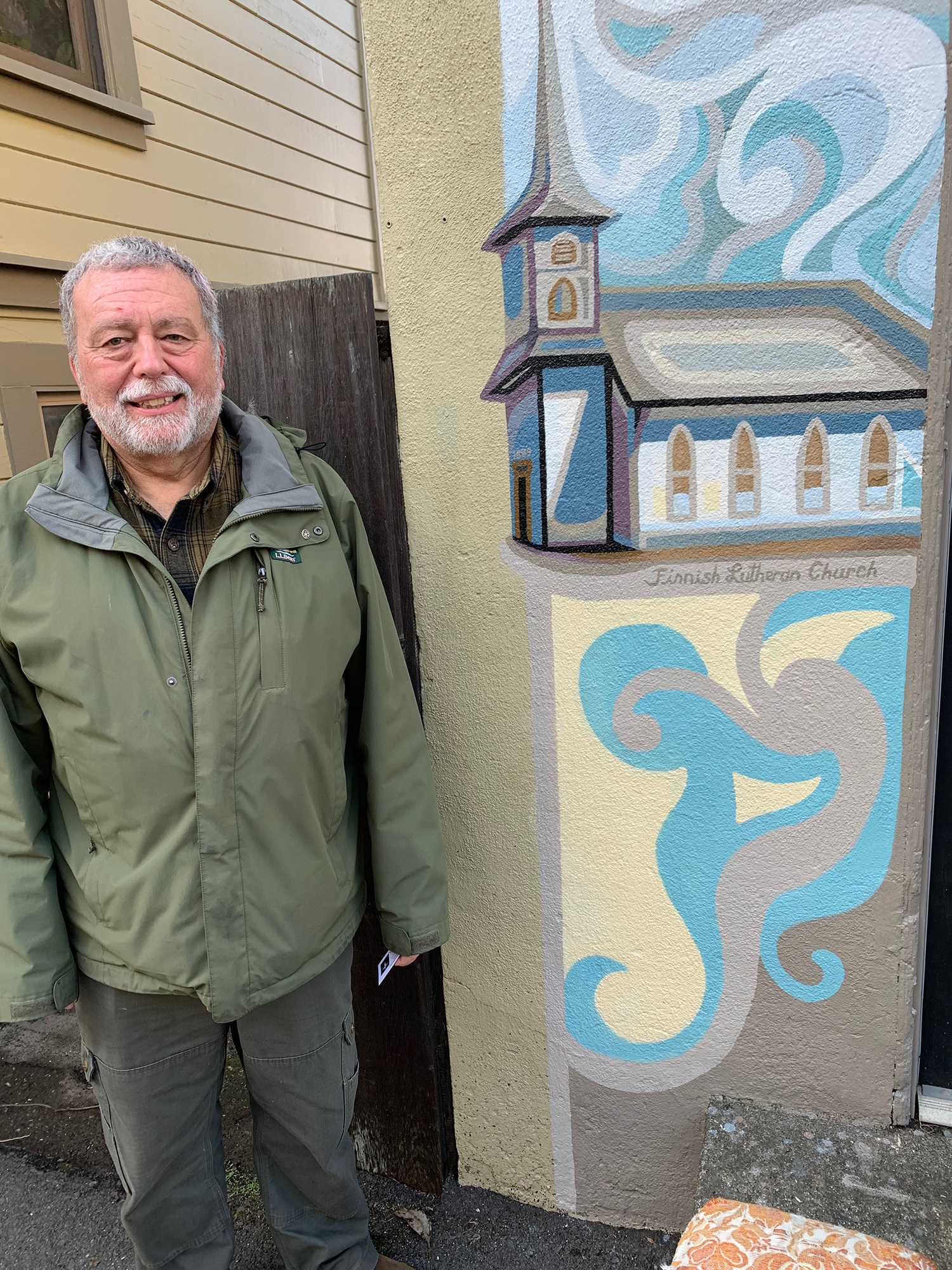
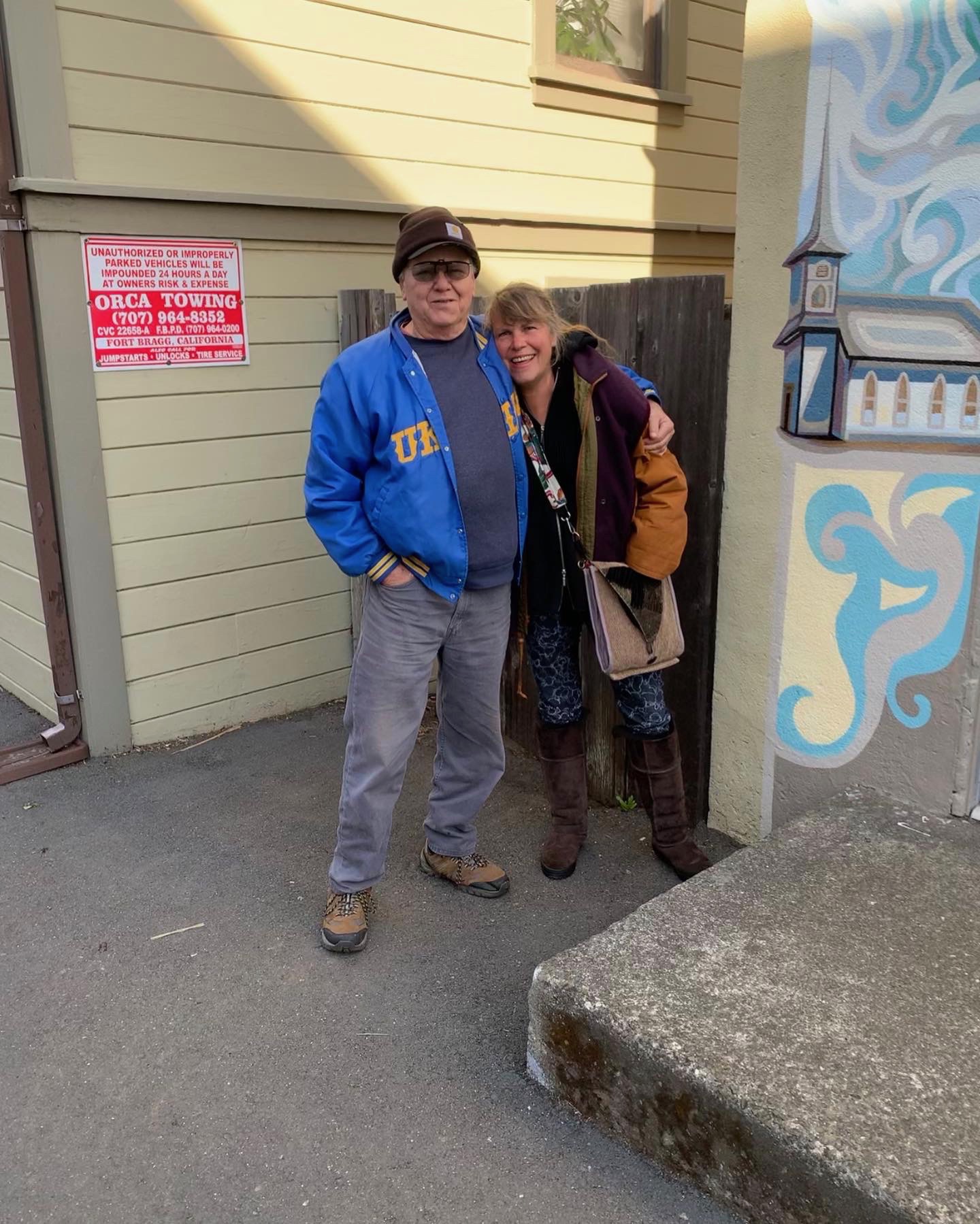
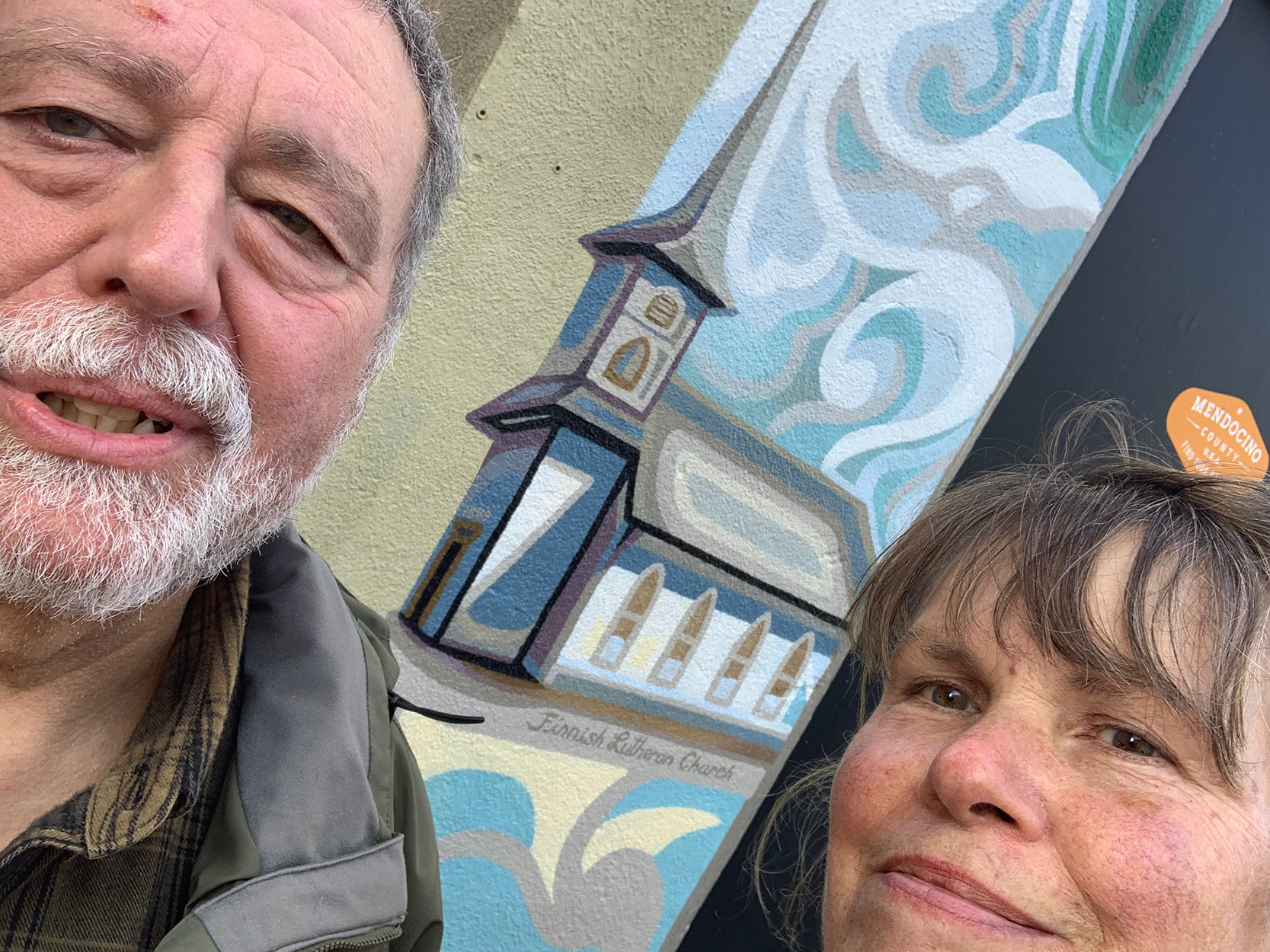
Paul Nylund is a local man who comes from one of the Finnish families and attends the church. He sings Silent Night in Finnish at the Christmas night-time service. He suggested that the church be included, that a representation of this community would not be complete without it. See his reaction when I showed it to him for the first time:
Sauna
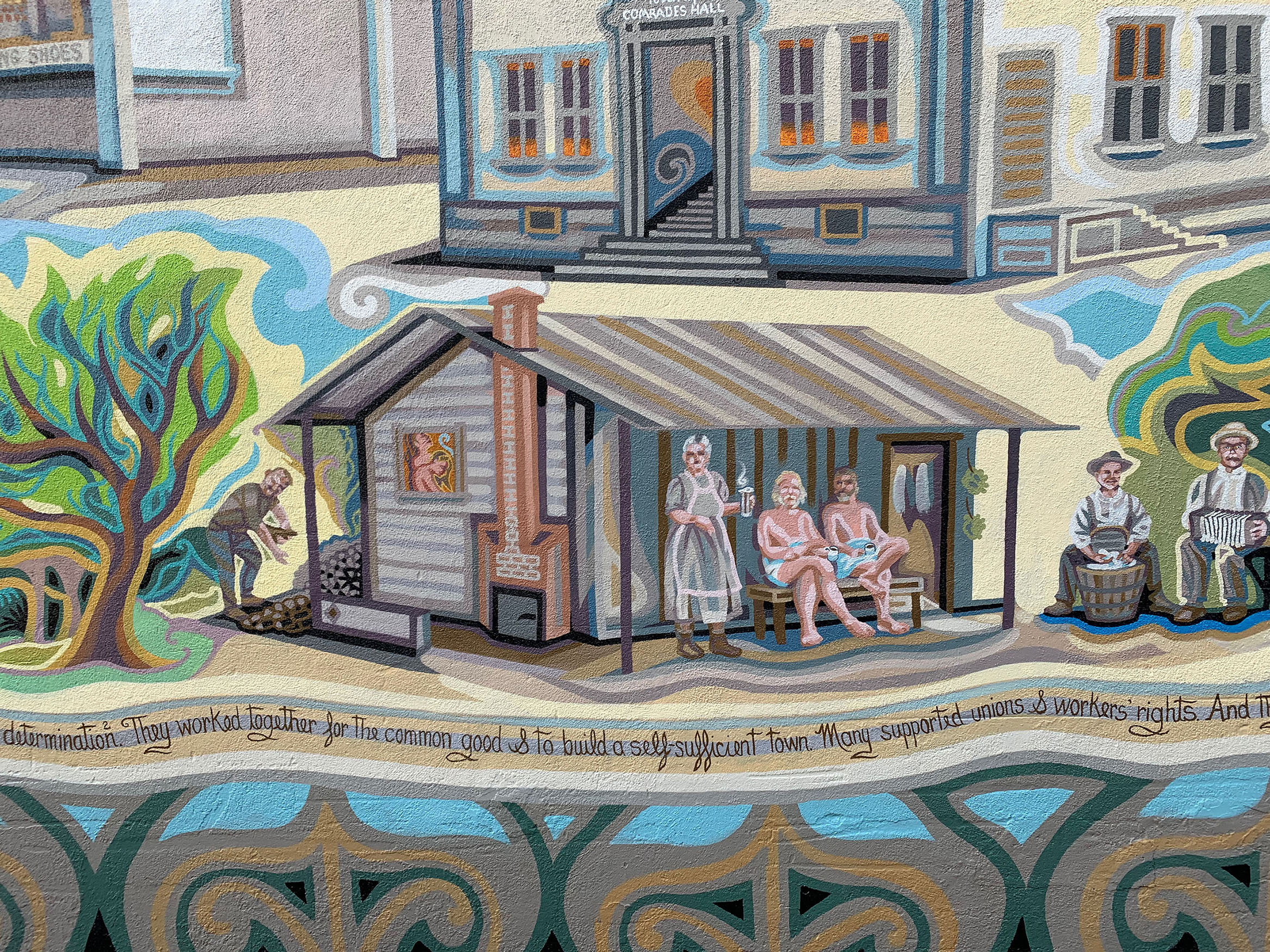
The sauna is another building highlighted in the mural, but it has such cultural significance I gave it its own page. (fourth button below)
